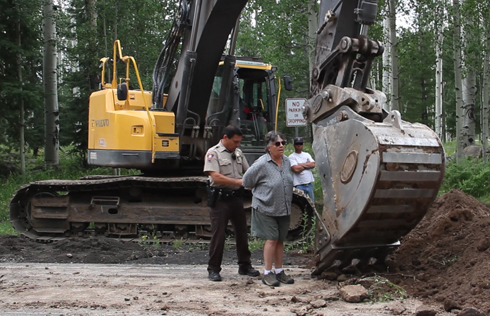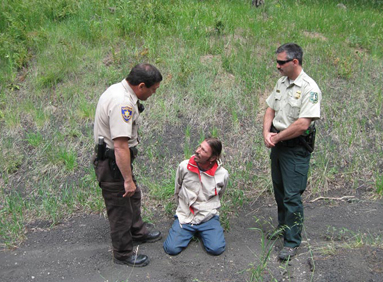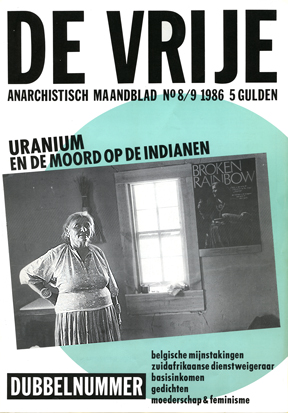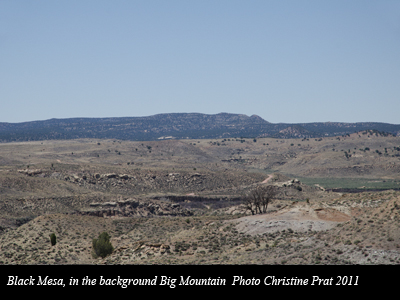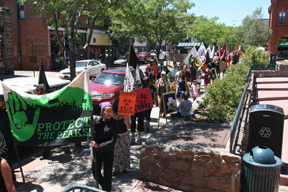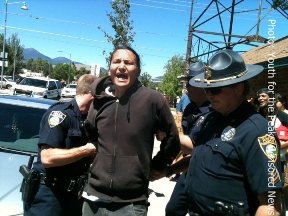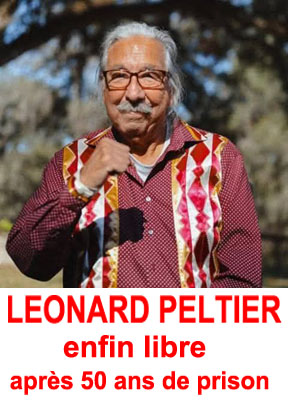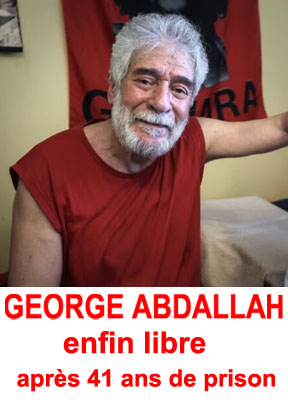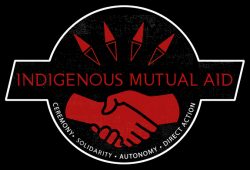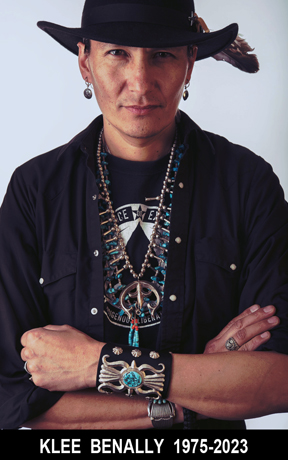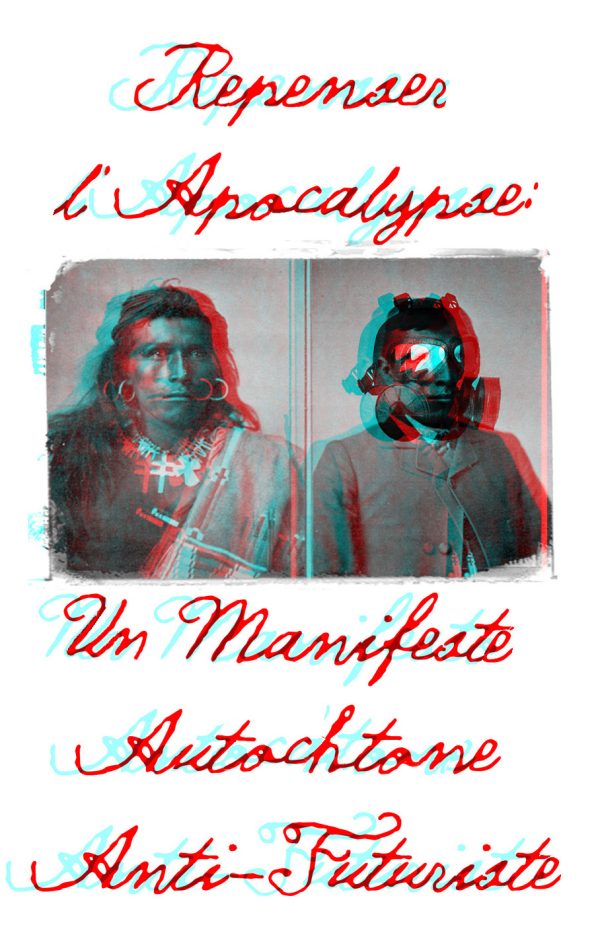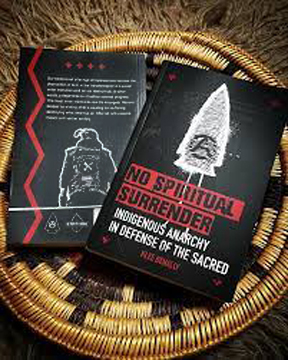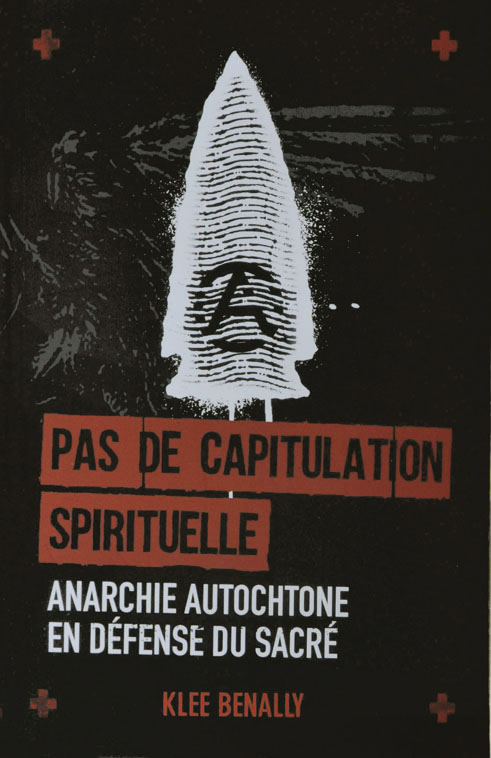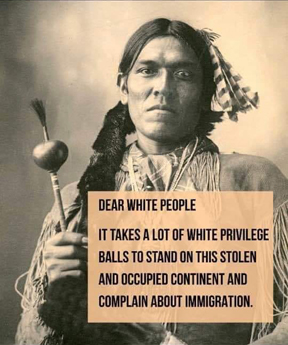Les actions de désobéissance civile organisées à Washington pour protester contre l’oléoduc qui doit amener le pétrole extrait des sables bitumineux d’Alberta jusqu’au Golf du Mexique à travers les Etats-Unis, ont commencé samedi. La police a procédé à de nombreuses arrestations dans le but avoué de décourager les autres participants.
22 août 2011
Plus de 2000 personnes – des 50 états des Etats-Unis et du Canada – se sont inscrits sur le site www.tarsandsaction.org pour participer à des actions commencées samedi 20 août et devant durer jusqu’au 3 septembre.
Chaque jour un groupe de 50 à 100 personnes prend par à un « sit-in » et est relayé par un autre groupe le jour suivant.
70 personnes ont été arrêtées samedi et au moins 50 dimanche. La police a admis procéder à ces arrestations dans le but de décourager ceux qui doivent les relayer pendant les deux semaines qui suivent. La police se soucierait particulièrement d’éviter les « sit-in » pendant les manifestations officielles qui doivent débuter le 28 août et se poursuivre pendant une semaine à l’occasion de l’inauguration d’un mémorial dédié à Martin Luther King Jr. Ils ont apparemment oublié que Martin Luther King était justement devenu célèbre en prônant la résistance non-violente créative.
Au préalable, la police avait pourtant assuré verbalement aux organisateurs que les manifestants ne risqueraient qu’une amende de 100 dollars et seraient relâchés immédiatement. En fait, les personnes arrêtées samedi sont restées en prison et devraient passer au tribunal ce lundi. Bien que surpris, les organisateurs ont assuré qu’une nuit en prison ne pourrait en aucun cas décourager les futurs participants. Ils considèrent l’affaire de l’oléoduc comme le principal test pré-électoral pour Obama sur le plan de l’environnement.
Sur l’opposition des Nations Autochtones au projet et leurs griefs et arguments, voir article précédent.
En Anglais :
Articles sur les manifestations de ce week-end par Tar Sands Action sur Censored News
Lettre de scientifiques Américains au Président Obama
Au rassemblement pour la Protection de notre Mère la Terre au Dakota du Nord, des activistes des Premières Nations ont annoncé une action de désobéissance civile pour empêcher la construction aux Etats-Unis d’un oléoduc pour les sables bitumineux très polluants.
Par Brenda Norrell
Censored News
Traduction Christine Prat
Lundi 1er août 2011
NEW TOWN, Dakota du Nord – La résistance aux Sables bitumineux très polluants a annoncé des projets de désobéissance civile à Washington pour faire comprendre au gouvernement Obama qu’il faut mettre un terme à un projet d’utilisation du pétrole le plus sale de la planète, qui menace les ressources naturelles et les humains en Amérique du Nord, y compris les territoires Indiens.
S’adressant au Rassemblement Pour Protéger notre Mère la Terre, Clayton Thomas Muller dit que des actions de désobéissance civile sont projetées à Washington pour mettre le gouvernement Obama devant ses responsabilités, maintenant qu’il a entre les mains une décision cruciale concernant l’oléoduc devant transporter les sables bitumineux, projet de TransCanada Corp. Keystone XL.
Muller dit que si cet oléoduc, qui doit aller du Canada au Golf du Mexique, était autorisé, il traverserait des terres sacrées et mettrait en danger les ressources des territoires Indiens, entre autres les nappes aquifères des Lakota.
« C’est un projet absolument délirant, surtout à une époque de changement climatique » dit Muller, ajoutant que les industries de la côte du Golf du Mexique sont déjà en train de se préparer pour ce pétrole sale.
Muller s’est adressé à des représentants de Peuples Autochtones venus pour certains du Guatemala, du Mexique et du Canada, au 16ème Rassemblement Annuel pour la Protection de notre Mère la Terre, organisé par le Réseau Indigène pour l’Environnement du 28 au 31 juillet 2011, à New Town, au Dakota du Nord, au cours duquel ont eu lieu deux réunions de travail sur les moyens d’arrêter les destruction causées par les Sables Bitumineux d’Alberta.
Des Navajos qui combattent les centrales au charbon et le drainage de leurs nappes aquifères par la compagnie charbonnière Peabody Coal étaient présents, et des Wixarika (Huicholes) sont venus chercher des alliés pour mettre un terme à l’exploitation minière de la First Majestic Silver Corp. de Vancouver (British Columbia), qui détruit leurs montagnes sacrées.
Le Rassemblement s’est tenu sur les terres des Mandan, Hidatsa et Arikara, où les Amérindiens combattent un projet approuvé par le Bureau des Affaires Indiennes pour le forage de 3000 puits de pétrole et de gaz. Déjà, l’air, l’eau et la terre sont dévastés par les nombreux puits de pétrole et de gaz, et les forages, le trafic des poids lourds et l’explosion du nombre de travailleurs du pétrole et du gaz ravagent l’environnement, l’économie et la vie quotidienne des gens.
Avec pour but la fermeture des industries du fuel fossile et l’arrêt de l’exploitation des sables bitumineux très polluants en Alberta ainsi que du projet d’oléoduc aux Etats-Unis, Muller a parlé de la récente victoire pour le Caribou.
Au Canada, le juge de la Cour Fédérale Peter Crampton a donné au Ministre de l’Environnement Peter Kent jusqu’au 1er septembre pour publier son plan national de sauvetage du caribou. Selon l’Edmonton Journal, le juge Crampton a déclaré que le gouvernement devait revenir sur son refus de publier un décret d’urgence pour la protection du caribou menacé dans la région des sables bitumineux de l’Alberta.
Plus tôt, le ministre avait repoussé les exigences des Premières Nations et conclu que les sables bitumineux ne constituent pas une menace imminente pour le sauvetage national du caribou des régions boréales.
D’après le Globe and Mail, aux Etats-Unis le membre du Congrès Alcee Hastings a prévenu que « le risque de fuite de ces oléoducs pour les sables bitumineux est très réel. »
« Le pétrole ronge les oléoducs, les endommageant et conduisant à des fuites fréquentes » a-t-il déclaré au cours du débat sur l’oléoduc proposé par TransCanada Corp. Keystone XL, qui amènera le pétrole brut des sables jusqu’à la côte du Golfe du Mexique s’il est approuvé. Cela fait écho au rapport du Conseil de Défense des Ressources Naturelles, un groupe écologiste puissant aux Etats-Unis, qui a qualifié le pétrole brute des sables bitumineux de substance « hautement corrosive, acide et potentiellement instable » qui « pourrait mettre en danger la santé publique de l’Amérique. »
Le Chef Allan Adam, de la Première Nation Athabasca Chippewa de Fort McMurray, avait dit précédemment que les décisions du Département de Développement de Ressources Durables de l’Alberta, présidé par le Ministre Mel Knight, menacent les Droits de chasse et cueillette traditionnelles garanties par Traité.
La Première Nation Athabasca Chippewa a déclaré que « le gouvernement de la province évitait systématiquement de subvenir aux besoins de base lorsqu’il s’agit d’air, de terres et d’eau dans la région et s’abstenait d’impliquer de manière significative les Premières Nations dans les décisions concernant la gestion des terres conformément aux Droits indigènes garantis par Traité. »
« Tant que l’Alberta ne fera pas d’efforts sérieux pour protéger la terre, réglementer l’industrie et garantir que les Premières Nations sont à la table des négociations en tant que partenaires à part entière pour développer des solutions aux graves défis environnementaux créés par le gouvernement et l’industrie, ils peuvent s’attendre à ce que nous nous opposions à tout développement ultérieur dans la région. »
Au Canada, Leslie Cardinal, appartenant à une Première Nation, a déclaré « Le gouvernement du Canada a accepté la Déclaration des Nations Unies sur les Droits des Peuples Autochtones, suivant un mode conforme à la Constitution et aux lois du Canada. La Déclaration des Nations Unies dit clairement que les Peuples Autochtones ont le droit de maintenir et renforcer leur relation spirituelle distinctive sur les territoires, eaux et autres ressources qui leur appartiennent traditionnellement, ou qu’ils occupent ou utilisent ou de toute autre manière, et de conserver leurs responsabilités vis-à-vis des générations futures.
La Nation Cree de Beaver Lake a lancé une procédure civile de masse pour prouver que l’exploitation débridée du pétrole et du gaz dans leur territoire traditionnel rend leurs droits acquis par traités dénués de sens.
Le document présenté donne une liste de plus de 15000 projets approuvés ou proposés sur leurs terres traditionnelles près du Lac La Biche. D’après l’Edmonton Journal, le clan a dit que « les travaux d’exploitation avaient forcé ses membres à quitter leurs secteurs traditionnels, dégradé l’environnement et fait décliner le nombre d’animaux sauvages, rendant impossible l’exercice effectif de leurs droits de chasse et de pêche garantis par le Traité 6.
Le pétrole brut tiré des sables bitumineux du Canada est lourd et épais, c’est une substance noire semblable à du goudron, qui demande de grandes quantités d’énergie et de travail pour être transformée en produits finis comme l’essence et le diesel. Même certains industriels de l’énergie d’Alberta le décrivent comme un ‘sale truc’, d’après le Globe and Mail.
Les projets d’exploitation des sables pétrolifères menacent les sols, car l’extraction initiale du bitume laisse une grande quantité de dépôts de produits chimiques toxiques. L’exploitation des sables pétrolifères menace l’eau au cours du processus de séparation et à cause du drainage des rivières. De plus, l’air est pollué par l’émission de gaz carbonique et autres. Et la combustion des produits pétroliers, par la suite, cause également l’émission de gaz carbonique dans l’atmosphère. D’après Wikipedia, il y a des métaux lourds dans les sables bitumineux.
You will find below an appeal by True Snow – the site for the Defenders of the Peaks – calling people from Flagstaff to attend a Silent Vigil on August 23.
Those of us who are not citizens of Flagstaff and live very far away could support them by sending emails to the City Council on that day. You can let them know what you feel, just remind them that “Water is Life”, or – what I plan to do – just send a photo of yourself or of any anonymous person with the mouth covered.
Christine Prat
Traduction en Français plus bas
Silent Vigil August 23 – 4PM – City Hall
Water is Life, Don’t sell ours to Snowbowl!
Wear tape or a cloth or something covering your mouth to show how the council has forced silence on this issue!
On Tuesday August 23 we will hold Silent Vigil in front of City Hall and subsequently in city council meeting. It is time to stop for a moment and pay our respects to the plants, trees, animals, and insects who died or lost their homes in the clear-cuts that are taking place up on the mountain at the hands of Arizona Snowbowl.
 It would only take four city council members with courage and vision to end this entire treated sewage effluent fiasco forever. With their simple vote to end the contract it could put an end to anger and racism and outright desecration and begin the healing process. It would also keep 180,000,000 gallons of water a year filtering through 1200 feet of volcanic rock back into our own aquifer, instead of dumping it directly above a perched aquifer on the peaks and uphill from the Hart Prairie aquifer. Flagstaff water for Flagstaff, don’t sell it to Snowbowl.
It would only take four city council members with courage and vision to end this entire treated sewage effluent fiasco forever. With their simple vote to end the contract it could put an end to anger and racism and outright desecration and begin the healing process. It would also keep 180,000,000 gallons of water a year filtering through 1200 feet of volcanic rock back into our own aquifer, instead of dumping it directly above a perched aquifer on the peaks and uphill from the Hart Prairie aquifer. Flagstaff water for Flagstaff, don’t sell it to Snowbowl.
Please join us in the City Council meeting and let them know what their silence feels like. The council chambers can likely hold about 200 people, so come on down and help us fill the room. Let them know that water is life, don’t sell ours to Snowbowl.
———————————————–
Vous trouverez ci-dessous un appel de True Snow – le site des Défenseurs des Pics – appelant les gens de Flagstaff à se joindre à une manifestation silencieuse le 23 août.
Tous ceux d’entre nous qui ne sont pas citoyens de Flagstaff et vivent très loin peuvent les soutenir en envoyant des mails au Conseil Municipal ce jour-là. Vous pouvez leur dire ce que vous pensez si vous êtes inspirés, juste leur rappeler que « l’Eau c’est la Vie » – ce qui est le thème de True Snow – ou bien – ce que je compte faire pour ma part – leur envoyer seulement une photo de vous-même ou un dessin représentant un individu quelconque, avec un bâillon sur la bouche.
MANIFESTATION SILENCIEUSE LE 23 AOUT À 16H – DEVANT L’HOTEL DE VILLE DE FLAGSTAFF
L’Eau est la Vie, ne vendez pas la nôtre à Snowbowl!
Bâillonnez-vous pour montrer comment le Conseil Municipal a imposé le silence sur ce problème !
Mardi 23 août nous organiserons une Manifestation Silencieuse devant l’Hôtel de Ville, puis à la réunion du Conseil Municipal. Il est temps de nous arrêter un moment pour rendre hommage aux plantes, arbres, animaux et insectes qui sont morts ou ont perdu leur habitat lors de l’abattage de la forêt commis en ce moment par Arizona Snowbowl.
Il suffirait de quatre conseillers municipaux courageux et clairvoyants pour mettre un terme définitif au désastre de l’eau d’égout recyclée. Il leur suffirait de voter pour mettre fin au contrat, à la colère et au racisme et à la profanation et mettre en route le processus de réparation. Cela permettrait aussi à 180 millions de gallons d’eau par an de continuer à être filtrés à travers la roche volcanique jusqu’à notre nappe aquifère au lieu d’être balancés directement au-dessus des nappes d’altitude sur les Pics et de la nappe de Hart Prairie. L’eau de Flagstaff est pour Flagstaff, ne la vendez pas à Snowbowl.
Rejoignez nous à la réunion du Conseil Municipal et faites-leur comprendre l’effet que fait leur silence. Les salles du Conseil peuvent contenir environs 200 personnes, alors venez et aidez-nous à remplir l’espace. Faites-leur savoir que l’eau est la vie, et qu’ils ne doivent pas la vendre à Snowbowl.
Original article in English: Klee Benally: Direct Action to Protect Holy Peaks Continues
L’ACTION DIRECTE POUR PROTÉGER LES PICS SACRÉS CONTINUE
Par Klee Benally
www.IndigenousAction.org
Photos Ethan Sing
Publié sur Censored News
14 août 2011
Traduction Christine Prat
Samedi 13 août 2011, après un rassemblement dédié à la prière, mes amis Mary Sojourner, Rudy Preston et moi-même avons été arrêtés par des agents des “forces de l’ordre” pour nous être élevés contre la profanation et l’écocide causés par la station de ski Arizona Snowbowl.
Depuis le 16 juin, 26 arrestations ont eu lieu pendant des manifestations contre la reprise de la profanation et de l’écocide des Pics Sacrés par Snowbowl.
Samedi, alors que le conducteur de l’excavatrice employé par Snowbowl déchirait la terre sacrée, les plantes et les souches pour prolonger vers le haut de la montagne la tranchée destinée au pipeline, 40 personnes se sont rassembler pour prier dans une pâture juste en face du chantier. Par moments, les bulldozers et l’excavatrice n’étaient qu’à 600m de l’assemblée, et le bruit des machines rendait presqu’impossible pour les Anciens de s’exprimer. Le bruit interrompait les déclarations et les prières des personnes présentes.
Bien que je ne puisse pas dire avec certitude comment çà a commencé, après la prière 30 personnes ont commencé à pousser des roches et rejeter de la terre dans la tranchée du pipeline. Tandis que e regardais a distance, chaque rocher remis à sa place dans la tranchée – pour refermer la cicatrice de la profanation – m’apparaissait comme plus puissant que n’importe quelle pétition que j’aie jamais lue.
Deux agents du Service des Forêts, qui apparemment avaient surveillé le rassemblement de prières, ont jailli des bois alors que l’action spontanée se déroulait.
A ce moment, je me suis approché de l’opérateur de l’excavatrice et dit « Arrêtez. Vous avez interrompu et dérangé nos prières. Vous devez arrêter. » Puis je me suis enchaîné et menotté afin de bloquer l’excavatrice.
J’ai été rejoint par plus de 30 personnes qui commencèrent à scander et chanter. Nous avons chanté d’une manière qui constituait une continuation de nos prières. Je suis resté enchaîné à la machine pendant environs deux heures.
Le Service des Forêts et les sheriffs du comté de Coconino m’ont détaché après que Louise Benally – de Big Mountain – ait exprimé sont accord en ce qui me concerne. J’ai été inculpé par le sheriff d’ « Intrusion » et de « trouble 1a l’ordre publique ».
Comment pourrais-je être par « intrusion » sur un site qui est si sacré pour moi ? C’est mon église. Ce sont le Service des Forêts et Snowbowl qui violent les droits de l’homme et la liberté religieuse en profanant cette Montagne Sacrée. Bien qu’un appel soit encore en suspens dans le système judiciaire, Snowbowl essaie de saper la procédure. De plus, Snowbowl et le Service des Forêts violent l’accord de 2004 (MOA, Memorandum of Agreement) signé avec les Nations Autochtones. Cet accord stipule que les Autochtones doivent être consultés avant toute construction, ce qui n’a pas été fait de manière significative, si seulement çà a été fait. Sans parler du fait que le Service des Forêts et Snowbowl violent la Déclaration d’Impacte Environnemental, vu qu’ils n’ont suivi aucune des mesures d’atténuation de l’impact sur l’environnement prévues. Leurs actions vont bien au-delà du « trouble à l’ordre publique. »
Après mon arrestation et ma libération, Mary Sojourner, écrivain et activiste locale, a affronté les agents du Service des Forêts et les sheriffs du comté de Coconino. Elle s’est avancée jusqu’à l’excavatrice pour bloquer la construction du pipeline et a été immédiatement menottée et fourrée dans un car de police.
Mary a déclaré « Je me suis lancée dans l’action, non seulement pour la Montagne, mais pour mon ami Klee Benally, que j’ai vu enchaîné à une monstrueuxe excavatrice, cette machine creusant pour le pipeline, qui a déchiré la montagne et l’air tranquille du matin, alors que trente d’entre nous priaient pour la Montagne ; et aussi pour que les femmes et les hommes âgés voient qu’il n’est pas nécessaire d’être jeune pour se lever pour défendre un lieu et une communauté qu’on aime. »
Rudy Preston, l’avocat local des Pics, a également été arrêté et inculpé de deux chefs de « trouble à l’ordre publique » et d’un pour « intrusion ».
Rudy a fait cette déclaration : « J’ai l’impression que le monde a changé pour toujours hier. Nos actions pour Nuvatukya Ovi (Pics San Francisco en Hopi) m’ont conduit à voir les véritables horreurs perpétrées chaque jour contre les Cultures Indigènes de notre communauté. Même sans eau d’égout sur la montagne, la profanation est la perpétuation du génocide systématique des peuples locaux depuis des siècles, et c’est aussi fort maintenant qu’à l’époque ou des peuples ont été forcés de participer à la Plus Longue Marche. Je ne fermerai plus jamais les yeux sur cette injustice. Et mon corps ne le perpétuera pas. »
Tout ce qui est arrivé au cours du dernier mois a été rendu possible par des individus pensant de cette manière et entreprenant des actions de toutes sortes. J’espère que d’autres sortiront aussi de leur petit confort pour créer des actions qui reflèteront leur participation. Tout le monde ne peut pas défiler dans les rues, tout le monde ne peut pas s’enchaîner, tout le monde n’a pas forcément de voiture. Mais nous aimons tous la montagne et vour n’avez pas besoin d’attendre un ‘organisateur connu’ pour vous dire ce que vous devez faire maintenant. »
Tandis que moi, Klee, j’étais enchaîné à l’excavatrice, je disais « Ceci n’est pas un jeu. Ce n’est pas un spectacle. Ce n’est pas fait pour les média. C’est pour empêcher cette profanation de se produire. »
La construction n’a été stoppée que pendant 2 heures, néanmoins elle a été stoppée. C’est du pouvoir. C’est un pouvoir que nous partageons tous. Si une, trois, six ou neuf personnes peuvent se mettre en travers du chemin des machines et dire « assez », imaginez ce qui pourrait advenir si chaqu’un d’entre nous tous se sentait concerné ?
Ce qui est en jeu, c’est nos prières, nos modes de vie, notre survie culturelle. C’est pourquoi il faut que cela cesse. C’est pourquoi nous disons ‘Pas de profanation pour des activités de récréation, protégez les Pics ! »
Pour plus d’information en Anglais et des dons (pour les frais de caution et de justice) : www.indigenousaction.org ou www.truesnow.org
Vidéo de Klee enchaîné, filmé par M.T. Garcia, sous-titres Ch. Prat
KLEE BENALLY S’ENCHAINE A UNE EXCAVATRICE
Par Brenda Norrell, Censored News
Traduction Christine Prat
Original article in English : Censored News photos-klee-benally-chained
Dimanche 14 août 2011
FLAGSTAFF, Arizona – Le Navajo Klee Benally s’est enchaîné à une excavatrice sur la Route de Snowbowl samedi 13 août, après qu’une machine ait interrompu une assemblée de prières sur les Pics San Francisco. Rudy Preston, agent de liaison avec la police de Protect the Peaks, et Mary Sojourner, écrivain, ont été arrêtés. Ils ont tous deux été libéré sous caution de la prison du comté de Coconino, d’après un message envoyé à Censored News à 1h30 du matin, dans la nuit de samedi à dimanche.
Enchaîné à une excavatrice, Klee déclara « C’est ici que nous traçons une ligne rouge, c’est ici que nons disons çà suffit ! »
« Vous êtes des criminels. Vous autorisez la profanation de ce qui nous est sacré. Vous menacez notre survie culturelle. »
« Quelle part de la notion de sacré ne comprenez-vous pas ? » poursuivit Benally. Ses mots furent répétés par des supporters rassemblés sur le site lorsque la police arriva et qu’un agent du Service des Forêts surgit des bois d’où il les avait filmés.
Benally, toujours enchaîné à l’excavatrice, ajouta « Ceci n’est pas un jeu. Ce n’est pas du spectacle. Ce n’est pas pour les média. C’est pour empêcher cette profanation de continuer. »
Ces mots furent répétés en écho par les autres Amérindiens rassemblés pour bloquer la destruction.
L’écrivain de Flagstaff Mary Sojourner et l’agent de liaison avec la police de Protect the Peaks Rudy Preston furent arrêtés sur place. Preston a été inculpé de deux chefs de trouble à l’ordre publique et d’intrusion illicite. Sojourner a été inculpée tard dans la soirée de dimanche. Klee Benally a été cité à comparaître pour trouble à l’ordre publique puis relâché.
Klee Benally a une réputation internationale comme chanteur du groupe de frères et sœur Navajo Blackfire et comme organisateur d’efforts de défense des San Francisco Peaks contre la destruction.
Mary Sojourner est auteur de deux romans, Sisters of the Dream et Going Through Ghosts ; d’un recueil de nouvelles, Delicate ; d’un recueil d’essais, Bonelight : ruin and grace in the New Southwest ; de mémoirs, Solace : rituals of loss and desire et She Bets Her Life.
Avant l’action de ce dimanche, 17 personnes avaient été arrêtées au cours des huit derniers jours, alors que des Navajos, des Hualapais, des Hopis, des O’odham et d’autres Amérindiens protestaient contre la destruction des montagnes sacrées.
Il est demandé aux touristes de boycotter la station Arizona Snowbowl, propriété d’Eric Borowsky de Scottdale (Arizona).
Pendant la semaine d’action, Protect the Peaks a manifesté devant le siège du Service des Forêts, l’Hôtel de Ville de Flagstaff, et le siège de High Desert Investment Company. High Desert Investment Company, responsable de l’abattage massif d’arbres sur les Pics San Francisco, est la propriété de G. Allen Ribelin, qui possède aussi High Investment Logging à Flagstaff.
La station Arizona Snowbowl a l’intention de fabriquer de la neige pour les touristes à partir d’eaux usées recyclées. Treize Nations Amérindiennes considèrent les montagnes comme sacrées. Les « medicine men » y cueillent des plantes médicinales et y organisent des cérémonies.
L’abattage d’arbres plusieurs fois centenaires a déjà commencé, pour faire passer le pipeline (qui doit amener les eaux usées) et autres projets de l’industrie du tourisme.
Les jeunes Amérindiens sont prêts à se faire arrêter pour mettre un terme à la destruction.
Plus d’infos en Anglais :
www.indigenousaction.org
www.truesnow.org
Plus de photos sur Censored News
BLACKFIRE dans la lutte : alors que le chanteur et guitariste Klee s’enchaînait sur le site des travaux, Jeneda et Clayson transmettaient le message au festival où le groupe devait se produire. Voir la vidéo sur youtube :
http://www.youtube.com/watch?v=yOnsbc97kk8
Lettres et courriels de soutien ou de protestation
Voir Page SAVE THE PEAKS / SAUVEZ LES PICS
Original article in English :
POUR PUBLICATION IMMEDIATE
CONTACTS:
protectpeaks@gmail.com
www.truesnow.org
Un barrage interrompt la destruction et la profanation de la Montagne Sacrée par la station de ski
Traduction Christine Prat
Flagstaff, AZ – 8 août 2011. Neuf personnes ont entrepris une action directe, lundi matin à 5h (heure locale), en bloquant la destruction in cours et la profanation des Pics Sacrés San Francisco. Neuf individus ont affronté directement les actions d’écocide d’Arizona Snowbowl, en arrêtant pendant huit heures les abattages d’arbres et le creusement de tranchée quotidiens. Les suppléants du sheriff arrivés sur place ont arrêté l’agent de liaison avec la police du groupe, qui était là pour assurer la sécurité des manifestants. Plus de 50 agents des autorités ont utilisé des scies industrielles et un marteau-piqueur pour briser de force le barrage.
« L’action d’aujourd’hui fait partie d’une série de manifestations destinées à empêcher la firme Snowbowl, le Service des Forêts US et d’autres compagnies de continuer à profaner les Pics Sacrés, » a déclaré Haley Coles après avoir été relâché de la prison. « Le pipeline ne sera pas toléré. Les eaux usées recrachées changées en neige artificielle ne seront pas tolérées. L’abattage systématique, l’entassement puis l’incinération d’arbres centenaires ne seront pas tolérés. La Montagne Sacrée sera défendue, et la profanation sera arrêtée ; quoiqu’il en coûte. La montagne est avec nous » dit Coles.
Stephen Zavodynik, également arrêté lundi, a déclaré « Aujourd’hui un petit nombre de gens ont décidé qu’ils en avaient assez des riches investisseurs, du génocide culturel, des Blancs privilégiés qui sont indifférents aux effets destructeurs de leurs activités de loisirs. Nous avons décidé de prendre les choses en main nous-mêmes et vous pouvez le faire aussi. Tout ce que vous ressentez comme sacré, défendez-le de tout cœur et prenez des risques, car les générations futures ne pardonnerons pas l’inaction. »
« En tant que pratiquant du snowboard, je suis pour le démantèlement immédiat de toute construction visant à l’extension de la station et à l’épandage d’eau d’égout recyclée sur les Pics Sacrés San Francisco. Nous sommes dans l’obligation d’agir immédiatement pour empêcher un génocide culturel et la destruction de l’environnement à seulement quelques miles d’où nous vivons, où une forêt d’arbres anciens est cueillie par des techniques forestières de coupe et incinération massives, tandis que des machines marchant au diesel tranchent la terre dans le but d’apporter des hormones, des composants chimiques cancérigènes et des matières fécales sur les parties les plus élevées des Pics San Francisco. Avoir autorisé Arizona Snowbowl à acheter des eaux usées recyclées à la Ville de Flagstaff représente la défaillance complète de nos élus à protéger les droits civiques des membres Autochtones de la commune de Flagstaff. Je continuerai à utiliser tous les moyens nécessaires pour protéger les Pics et soutenir mes amis et concitoyens. » a déclaré Kennedy.
Jenna Tomasello, qui participait aussi à l’action, a déclaré que « Presque toutes nos options sont épuisées. La Cour suprême a été incapable de protéger la liberté religieuse des Peuples Autochtones. Le Conseil Municipal de Flagstaff a été incapable d’écouter ses administrés qui n’ont cessé d’exprimer leur opposition à l’expansion d’Arizona Snowbowl depuis des décennies. Et le Service des Forêts des Etats-Unis a été incapable de protéger le public des effets environnementaux des eaux d’égout recyclées. Il est temps que plus de gens, où qu’ils se trouvent, ouvrent les yeux. Respectez la terre dont nous dépendons et respectez les gens à qui cette terre a été volée. Notre seul choix est de passer à l’action contre ceux qui menacent les cultures Autochtones, l’environnement et notre futur. C’est frustrant d’avoir dû en arriver là pour que ceci soit clair. »
« Ceux d’entre nous qui ont choisi de combattre les bastions coloniaux ont aussi choisi de combattre pour les esprits qui détiennent ce pouvoir. Si l’harmonie doit prévaloir, il faut les libérer de toutes les croyances qui tentent de contrôler la nature. Nous appartenons à la Terre ; la Terre ne nous appartient pas. » a déclaré Tom Lang, qui a participé à l’action.
Les 10 personnes arrêtées ont été libérées au bout de quelques heures grâce à un fort soutien de la communauté.
17 personnes ont été arrêtées pendant une « Semaine d’Action pour Protéger les Pics. » 23 arrestations ont eu lieu depuis le 16 juin, le jour où 6 personnes se sont enchaînées aux machines de Snowbowl et dans la tranchée destinée au pipeline.
« C’était une action autonome, organisée par les participants. C’était beau et puissant, et tout à fait responsable. Nous avions pris toutes les mesures pour assurer notre sécurité. Personne n’y a été poussé contre sa volonté » a déclaré Rudy Preston, l’agent de liaison avec la police arrêté. « Le barrage de Désobéissance Civile sur la montagne n’était pas un événement familial et n’a pas été associé aux actions légales prévues pour la Semaine d’Action. » dit Preston.
Depuis le 25 mai 2011, les propriétaires de la station Arizona Snowbowl, avec le soutien du Service des Forêts des Etats-Unis et le Conseil Municipal de Flagstaff, ont posé plus de 5 miles d’une conduite pour eaux usées qui doit en faire finalement 14,8 et ont abattu plus de 40 acres de forêt alpine rare. Actuellement une poursuite judiciaire contre le Service des Forêts concernant l’impact des eaux usées sur la santé humaine, est toujours en appel devant la 9ème Cour. Les individus ayant participé à l’action sur le terrain ne font pas partie de la Coalition engagée dans la poursuite légale.
Les Pics San Francisco sont sacrés pour plus de 13 Nations Autochtones. Ils constituent un endroit dédié aux prières et célébrations religieuses, un endroit où résident des divinités, un endroit où on procède à des sacrifices, où des herbes médicinales sont récoltées, où l’Emergence (des ancêtres des humains, pour les Navajos – NdT) a eu lieu, et un endroit où bien d’autres pratiques sacrées se déroulent.
Le barrage de lundi pour protéger les Pics rejoint des décennies de résistance à la profanation des Pics Sacrés. Dans les trois semaines passées depuis que Snowbowl a commencé l’abattage, des dizaines de camps ont été établis sur la montagne et des actions de solidarité ont eu lieu à Phoenix et Los Angeles.
Voir des photos et des vidéos du barrage sur :
http://www.indigenousaction.org/category/resistanceupdates/
Pour soutenir les défenseurs des Pics, envoyez des courriels et lettres de protestation:
Conseil municipal de Flagstaff:
Flagstaff City Hall, 211 West Aspen Avenue, Flagstaff AZ86002
council@flagstaffaz.gov
Service de la Qualité de l’Environnement d’Arizona (qui n’a pas fait d’enquête publique sérieuse avant d’approuver l’utilisation d’eau des toilettes pour faire de la neige) :
Arizona Department of Environmental Quality
1110 West Washington Street
Phoenix, Arizona 85007
Northern Regional Office
1801 West Route 66, Suite 117
Flagstaff, Arizona 86001
Origineel artikel in het Nederlands: click hier
et traduction française
COAL, URANIUM AND THE MURDER OF THE INDIANS
From “De Vrije”, article by Jansen, Amsterdam September 1986
Translation by Christine Prat
‘The earth and I are one soul.’ This Indian saying expresses tersely what the traditional Navajos and Hopis have been trying for twelve years to make clear to the American government. The impending deportation of ten thousand Navajos from the area in Arizona where their ancestors have been living for centuries – a deportation which could begin at any moment, as the ultimatum expired on the 7th of July of this year – threatens to be an all-time low in the history of the USA. A history in which the government systematically tried to put an end to the existence of Indian cultures. In which the ‘Ancient Peoples’ had to lose out to coal and uranium mining corporations, Mormonism, politicians en ‘economical development’. This article sheds light on the background of the conflict in Arizona and describes the struggle of the traditional Navajos and Hopis against the violation of their earth and their life.
On one day in the fall of 1977 a building team from the government arrived at Black Mesa, in the heart of the Navajo reservation in Arizona. Their assignment was to place a barbed wire fence through the rocky desert. Shortly after their arrival they suddenly stood face to face with Pauline Whitesinger, a 43 years old Navajo widow and mother. Pauline ordered the men to disappear from her land. The foreman of the team answered with an obscenity. Pauline waved her fist and the next moment the foreman was lying on the ground and she was pelting the team with sticks and dirt. Shrinking from her fierce attack, the men took to their heels.
Pauline Whitesinger’s action marked the beginning of a phase of actual resistance in the struggle of the Navajos to keep the land on which they had been living for centuries and to which they belonged with heart and soul. The fence – the placing of which they have been hindering since that moment – has to come there on the ground of the Navajo-Hopi Land Settlement, better known as Public Law 93-531. This law has been taken by a deliberately misled Congress. PL 93-531 pretends to solve a ‘conflict’ between the Navajos and the Hopis about the ownership of the Joint Use Area, an area at their common disposal. The Navajos were supposed to have confiscated it and the Hopis to want to throw the Navajos out of it. In reality, there is no conflict. Between the Navajo People and the Hopi People, that is. The real conflict is between the traditional Navajos and Hopis on one side, and their tribal councils appointed against their will by the central government, that central government itself, a number of mining and energy corporations and the Mormon church on the other side. The interest that binds those four – often closely interwoven – entities rests in the many billions worth coal, uranium, oil and gas in the ground of the Joint Use Area. The boards of directors – dominated by Mormons – of mining and energy corporations – which are often also the property of Mormons, are impatient to conclude with each other ground exploitation contracts. However, the Indians living on that ground do not intend to sacrifice it to that purpose. Moreover, the fact that the Joint Use Area (JUA) has long been common property of the Hopis and the Navajos makes the signing of contracts more complicated. The mining and energy corporations had therefore to create the ‘conflict’ and to stage a complete war on the ground, and they ultimately got the Congress to adopt their ‘solution for the conflict between the Hopis and the Navajos’. PL 93-531 stipulates that the Joint Use Area must be divided by a barbed wire fence into a Navajo half and a Hopi half. All the Navajos who live in the from now on Hopi area – about ten thousand – must leave. The same applies to the hundred Hopis who live on the Navajo area. Most are placed outside the reservation. This way the JUA becomes, in juridical and practical terms, quite more accessible for raw materials extraction.
THE EARTH LIVES
In order to understand what is exactly going on in and around the reservations, it is important to know something of the Hopi and Navajo history and culture. The gold fever of 1848 brought a stream of white Mormons and others to Arizona and New-Mexico (among others). Many settled on the land that had belonged to the Hopis for thousand years and on the bordering area where the Navajos had been living for six hundred years. Frictions occurred. Hopi resistance traditionally consists of non-violent refusal to cooperate. But the Navajos fought back against the white intruders but were defeated. A cavalry brigade headed by America’s national hero Kit Carson burned their land, destroyed their animals and orchards and kidnapped 8500 Navajos to a concentration camp near Fort Sumner, where many died of starvation. A few years later, the government came to the conclusion that it would be economically more profitable to enable the Navajo to sustain themselves than to fight them. The survivors were released and dropped into a small, barren reservation. In between, the white people had confiscated their land, so that the Navajos who escaped from the reservation settled down in the immediate neighborhood of the Hopis. The pressure brought by their presence causes every now and then minor disputes, but they are always solved among each other. In general, the relationship between the two peoples is good. The Hopis have much more problems with the fact that the US also created a reservation for them in 1882. Something that they had absolutely no right to do according to the Hopis: according to the Guadalupe-Hidalgo treaty, they have remained an independent nation.
In 1934 the Hopi reservation is reduced to a third of its previous size. The Hopis now graze their livestock in ‘District 6’; the Navajos outside it, in the rest of the previous reservation. The property rights on this new piece of no-man’s land belong to both people jointly. This is how the Joint Use Area came into existence.
At the beginning, the American government thinks that the Hopis and the Navajos have been safely put away on a few patches of worthless land. But it soon turns out that the ground under their reservations abundantly contains oil and gas, and in the course of the twentieth century it becomes obvious that the Navajos and the Hopis sit on top of a billions worth treasure of minerals: huge coal fields and billions of tons of uranium lie under the surface. Many mining and energy corporations immediately show great interest. Their attempts to conclude ground exploitation contracts with the Indians fail, however. The latter happen to think differently about the earth than the white Americans. Although each people has its own way of life and culture – the Hopis live from agriculture on top of the rocky mesas, while the Navajos from way back move around the desert with their livestock – their attitude towards life is in fact similar. They feel inseparably bound to the land that gave birth to them and their ancestors. And the land, the earth lives. Everything that grows or moves on it has its place in her cycle; everything holds everything in balance. ‘We must see ourselves as a part of the earth, not as an enemy from outside trying to force our will upon her.’ This is the way one of the Indians expresses it. ‘We know that because we are a living part of her, we cannot damage a small piece of her without hurting ourselves.’ This is why the Ancient Peoples do not take for themselves more than what is necessary. For instance, the Hopis rarely have more animals than are necessary for their daily needs. The land itself is nobody’s property. But it is the duty of the people living on it to protect it. To tear and maim this living Mother Earth has long been unthinkable for the Hopis and the Navajos, until they saw it happen under their very eyes.
Americans and Westerners generally see the earth differently: as a consumer item appreciated basically for its exchange value. It is a matter of course to divide, buy and sell land, to break it open to get all kind of things out of it and to cover it with concrete. The land is dead material. This is the difference between the western notion of the earth and the Indian approach to it that ultimately founds the conflict about the JUA.
MORMON HELP
Apart from recalcitrant contract partners, there is also, at the beginning of the century, another obstacle in the way of the energy developers to be. With whom can they conclude an agreement? According to a 1891 law, it should happen with ‘the ruling council representing the Indians’. But such a council does not exist. Traditional Hopis and Navajos have never known anything like a central authority or representative body. The political power has been for times immemorial decentralized and relies on a consensus between autonomous communities. For the Navajos the basic political unit is the autonomous family. It includes between twenty and two hundred members who economically work together and hold their ceremonies in common. At the head can sometimes be a man, but it is usually a woman. The livestock and belongings are managed by the women, and their descent is determined by the women’s lineage. It is no coincidence that the main resistance against the consequences of PL 91-531 comes from them. It is often women over sixty, armed with riffles, who stand against the building teams.
The central authority phenomenon is alien to the Hopis as well. Each Hopi village is an autonomous unit with absolute self government. They do have a traditional leader, de Kikmongwi, but his or her authority is based solely on his or her wisdom. If there are problems, the Kikmongwis of the different villages meet to exchange information and deliberate. However, actual decisions are taken exclusively in the villages and not before all the people involved have come to an agreement. This is often a laborious way demanding a lot of talking, but consensus is a condition for decisions concerning the village.
Such an organization of Indian society was a thorn in the side of the energy corporations and the government. Not only the Indians were not adapted to American society, but it was also impossible to do business with them. Where were the people entitled to put a signature under a contract and were also ready to do it without having to get all the others to agree? Those people had to be made up. And there were, as it happens, Mormons who were already busy with it since 1880: to turn traditional Indians into profit and power thirsty American citizens. The Mormon faith teaches that a dark skin is a God punishment. The Indians are dark, according to the Book of Mormon, because they have fallen into disbelief and vanity. If they convert to Mormonism, they will turn white again. Led by the noble wish to save the Indians, the Mormons start around 1880 to drag the most gifted Hopi and Navajo children (among others) out of the reservations to send them far away to boarding schools or foster homes. Until 1915 it often happened with the help of the American cavalry who literally kidnapped children and arrested recalcitrant parents. After 1915 they mainly misused the dire financial situation of the parents to persuade them. In the mainly Mormon foster homes it is forbidden for the children to speak their own language or to wear their traditional clothes and hairstyle. They are given English names and their Indian habits are declared taboo. The children are subjected to an extensive religious indoctrination. Nowadays between twenty and forty percent of the Hopis are Mormons – among the Navajos the percentage is somewhat lower. Those people believe that God’s Realm can be realized on earth by accumulating as much as possible material richness. The Mormon church, which has millions of members, is thus very rich and powerful. Mormons own many companies and transnational corporations. In the state of Utah (which includes a portion of the Navajo reservation) they control the whole political life. They founded Salt Lake City. In the companies whose greed has been drawn to the riches of Indian ground Mormon interests are greatly represented.
Mormon Hopis and Navajos see their own land with the same eyes as those companies. This is precisely why the present ‘conflict’ can be presented as such.
“YELLOW CAKE”
Let’s go back to the beginning of the century. While the Mormons are helping Indians to become white capitalists, the BIA – a governmental institution that thinks on the same line as business men – does not remain idle. In 1921 a subsidiary of Standard Oil finds oil in the Navajo reservation. The BIA immediately convenes all Navajo men (!) to approve an oil agreement. The seventy five persons attending unanimously vote against it. The BIA feels concerned by Standard Oil’s fate. After two years of efforts they manage, probably through threats or false promises, to form a permanent Navajo Council whose first act is to hand their contracting powers over to the BIA!
This was sixty three years ago. Nowadays there are four strip coal mines (the coal is obtained by blowing up the upper layer of the land) and five huge coal power plants on the Navajo reservation. The area, which used to have the cleanest air in the USA, is now covered with black smoke and soot. The Four Corners Power Plant rejects every day three hundred fifty tons of sulfur compounds and two hundred tons of nitrogen compounds in the atmosphere. There are thirty eight uranium mines and six uranium factories. At the moment they mostly stand still because coal is easier to get and less controversial. However, uranium mining is still interesting for the production of nuclear weapons.
Of the five thousand Navajo miners who worked in the uranium mines between 1952 and 1969, over fourteen hundred died of cancer, mostly lung cancer. A great number of survivors suffer from it. The underground water is contaminated. Countless horses and sheep died from having drunk it. Radioactive waste has been left behind in huge heaps all over the reservation. Maria van Kints of the association Dutch Action Group for North American Indians (NANAI) has seen it herself: ‘It looks like big sand hills. Yellow Cake, they call it. The children play in it, houses are built with it, the sheep eat the grass that grows on it, so that it comes into the food chain. And it will remain contaminated for thousands of years!’ Many children are born dead or with malformations.
Moreover, the financial agreements for oil, uranium and coal concluded by the BIA for the Navajos are the worst in the world. Typically, there is a contract on land by which the Navajos get fifteen cents for a ton of coal, while on non-Indian land it is usual to pay one and half dollar – ten times more. The Navajos themselves do not have electricity.
BOYCOT OF THE REFERENDUM
For the Hopis too, an official council has been made up. To put an end to the self government of the Indian peoples the American government issued in 1934 the Indian Reorganization Act (IRA). This law was cheered as a great achievement: it gave the Indians the blessings of the American political system. The constitution has just been written for them. Among others it includes a rule according to which all decisions of their councils must be approved by the central government. The Kikmongwis have been against the IRA (which had been forced upon 76 percent of the Indians) from the beginning. They boycott the referendum about it: the Hopi way to express their opposition to something. The central administration knows that very well but still decides to consider abstention as agreement. With the consequence that the Hopis are suddenly governed by a central council that can issue laws and conclude agreements with companies in the name of the whole people. The Hopi council still has an electoral base of less than ten percent. The attendance, which for long had not been enough for a quorum, was, and is still, almost entirely composed of Mormon Hopis. These so-called ‘progressive’ find councils, exploitation of the land and ‘the American way’ all wonderful and are good friends with the administration.
In 1955 the Hopi council recruited a lawyer from Salt Lake City to conduct their negotiations with the energy companies. That John Boyden, who had self arranged through the BIA the composition of the council, is a Mormon ex-archbishop. A few years later he submitted a ‘land claim’ in the name of the Hopis to the Indian Land Claims Commission, and ‘won’. According to a recent law, this did not mean that the Hopis would get their land back, as they initially believed, but only that they would get a relatively very small amount of money, from which Boyden received a substantial percentage. Until now even the members of the council have refused to take the money.
In the sixties, Boyden concluded numerous agreements with mining and energy companies. The Kikmongwis, as representatives of the traditional Hopis, have protested at every stage and even brought the case before a federal judge, who rejected their claim that the council was not a legitimate representative of their people, on the ground that they had no right to prosecute their own authority!
NATIONAL SACRIFICE AREA
Meanwhile Boyden continues. An enquiry later showed that, apart from the Hopi council, he worked at the same time for a big Mormon coal corporation, Peabody Coal Company. It is with Peabody that he signed the most important agreements in 1964 and 1966 (his own salary being one million dollars). Peabody leases hundred square miles of land on Black Mesa, which partly lies in the Joint Use Area and contains the biggest coal field in Arizona. The mines have left enormous scars on the land. Even worse is that they use for the transport of the coal – via a hundred kilometers long pipe line – until today, seven and half million liters of water each day. This is a serious threat to the agriculture and livestock breeding on which the Indians of the already quite dry region depend. ‘The pumping of such huge quantities of water from under Black Mesa will break the harmony and bring everything out of balance’ warn the Kikmongwis in 1971. Their protest concerns the whole western way of dealing with the earth and its consequences. ‘The technical developments of the white man occurred as a consequence of his lack of concern for the spiritual and for the way in which everything lives’ according to their spokesman Thomas Banyacaya. ‘If the holy land is desecrated and torn open by raw materials exploitation and other destructive practices, it will mean on longer term the biggest death march for all the peoples of the world.’
The coal field under Black Mesa – in between declared by the National Academy of Sciences ‘National sacrifice area’ – extends as far as Big Mountain, four kilometers further into the Joint Use Area. It is estimated that there lie twenty one billions tons of easily accessible coal. However, apart from Peabody, not a single mining company manages to get something of it. Neither the Hopi council nor the Navajo council (who, unlike the traditional Navajos, do not object to issuing mining permits) have the right to lease the land independently, but together they cannot agree about who gets what. Meanwhile the people who live on Big Mountain are determined to keep all the twenty one billion tons of coal inside the ground.
“GOOD INDIANS”
In the second half of the sixties, the ‘progressive’ Hopis (the Hopi council, that is) started an intensive campaign in order to split the Joint Use Area and get rid of the Navajos. They are personally concerned by the exploitation of the land, as the salary of Indian functionaries partly depends on the incomes from mining permits. Also, the ‘progressive’ go more and more over to large scale livestock breeding and thus need more land than before. Jerry Kammer, a journalist who went there to make an enquiry, concluded in 1980: ‘The family who gets the most profit from this way of doing business is the Sekaquaptewa family. The Sekaquaptewas are the richest Hopis and own the biggest livestock herd. Mormons. Wayne Sekaquaptewa also owns the Hopi daily paper and used to be president of the Mormon church of the reservation. His brother Abbot is the present chairman of the Hopi council.’
The campaign leader is John Boyden, however. With the help of Peabody Coal Company, a group of bankers from Utah and WEST, an association of interested energy companies, he is constantly busy in Washington D.C. attempting to win Congress to his case. The Congress gets to hear that the Navajos have broken into Hopi land and refuse to leave. A complete war on the ground would be going on. Meanwhile a Public Relations firm hired by the Hopi council, Evans & Associates from Salt Lake City, is staging that ground war. They circulate photos of burned camps and destroyed barns, which are eagerly taken over by most newspapers. The Washington Post wrote on July 21st 1974: ‘Evans & Associates also represent 23 service companies who had been installing power plants and strip mines in the Four Corners area… Those companies told their customers that the Hopis were “good Indians” who would not stop the thing on which their air conditioning functioned.’
The campaign is successful. In 1974 a Congress distracted by Watergate adopts Public Law 93-531, zealously advocated by senator of Arizona Barry Goldwater, among others. According to this law the Joint Use Area must be divided by a six hundred kilometer long barbed wire fence into a Navajo and a Hopi parts; the ten thousand Navajos living on the wrong side of the fence must kill or sell ninety percent of their livestock in preparation of their deportation; moreover there is a ban on building, improving or repairing houses and barns. A relocation commission will organize the deportation of the Navajos. They get a ‘compensation’ of five thousand dollars if they ‘voluntarily’ leave within five years. Apart from that the law promises to ‘minimize the negative impact’ by giving them land elsewhere. The government will provide ‘decent hygienic housing’ and the infrastructure for the community: schools, hospitals, roads, etc. Because in the reservation there is no more room. The land is already overgrazed and it is difficult to survive on it.
A narrow twenty percent of the inhabitants of the JUA have in between been relocated, often under pressure. This started to reveal the extent of the tragedy implied by PL 93-531.
DEPRESSIONS AND SUICIDES
The relocated Navajos ended in individual family housing, in lower middle class racist suburban towns. The small houses had wall plugs and gas and water pipes, but electricity, gas and light were not always available. To say nothing of the Promised Land. Forty percent of the relocated Navajos do not understand English and the majority of them had never been wage workers or paid taxes. But it is difficult now, in their small gardens, to remain independent sheep breeders. They must try to survive in a completely alien economic and bureaucratic system, while they have little chance to find a job, considering their background. Most of them soon get into troubles as they must pay taxes or suddenly get bills for gas, electricity and medical costs. Credit companies rushed to cleverly exploit there lack of experience with economic matters. For instance they convinced them to give their houses as security for loans which credit companies knew they would never be able to pay back. Other houses were sold for a quarter of their value. In between, fifty percent of the Navajos relocated in Flagstaff have lost their house. Remarkably enough, the relocation commission keeps buying those houses two or three times again, apparently without wondering what happened to the previous owners.
Most government promises about schools and health services turned out to be void. But for the Dineh much worse than their material situation was the separation from their land. With their land, to which their religion and their existence are tightly bound, the ground also metaphorically disappeared from under their feet. They see their culture being destroyed, their community life being split: ‘This seems to be the end of us’ says a relocated woman. ‘Our plans for the future of the children have fallen apart. We feel very lonely since the relocation. It looks like a prison here. We wonder why we did it. If we had not accepted to be relocated, maybe our daughter would not have died.’ It is a fact that many, apart from depression and alcoholism, suffer from health problems. The mortality is high. Under the emotional stress families fall apart and the number of suicides has greatly increased.
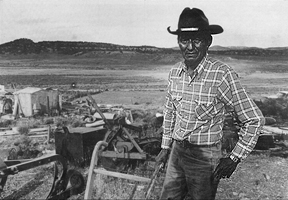 Some relocated Navajos returned illegally to their previous land. But it is more and more difficult to survive there. Due to the ban on building and repairing more and more growing families live in slowly deteriorating hogans, the traditional wooden cabins. If they try to do anything to improve their housing, they see the result of their efforts being destroyed under their very eyes by government workers. With only ten percent of the livestock they used to have they can hardly stay alive: their food consists of bread, coffee and potatoes. But they are determined not to be chased away. It has been announced in Reagan’s name that the army would be called in. The old Navajo women are prepared for it. ‘We have faced soldiers before. Until now we survived it.’ The task won’t be easy for the militaries. Some women have already been arrested for shooting over the heads of fence builders, but nobody has been charged until now. And the fence won’t keep standing.
Some relocated Navajos returned illegally to their previous land. But it is more and more difficult to survive there. Due to the ban on building and repairing more and more growing families live in slowly deteriorating hogans, the traditional wooden cabins. If they try to do anything to improve their housing, they see the result of their efforts being destroyed under their very eyes by government workers. With only ten percent of the livestock they used to have they can hardly stay alive: their food consists of bread, coffee and potatoes. But they are determined not to be chased away. It has been announced in Reagan’s name that the army would be called in. The old Navajo women are prepared for it. ‘We have faced soldiers before. Until now we survived it.’ The task won’t be easy for the militaries. Some women have already been arrested for shooting over the heads of fence builders, but nobody has been charged until now. And the fence won’t keep standing.
GENOCIDE
Resistance grows among traditional Navajos. They also more and more clearly attack the present chairman of the council, Peterson Zah. Zah presents himself as representative of the traditional people but does not work against the administration. He negotiates on how the deportations must be carried out, he does not stand against them. Together with General Electric and Bechtel, he even made plans to install a power plant of twenty thousand megawatt and a strip mine on Navajo land. The ‘old’ Navajos have nothing to expect from him. It is mainly the traditional Hopis who support them in their resistance to governmental plans. The ordinary Hopis have as little to win as the Dineh from their council’s plans, which do not leave any doubts about the fact that they will use the newly gained land for coal strip mining, of which mainly council members will get profit. Despite all the external attempts to set them against each other, most Hopis remain on the same line as the traditional Navajos. In 1981 Thomas Banyacaya published in their name a declaration of solidarity with the Dineh.
In 1982 the Big Mountain-JUA Legal Defense/Offense Committee (BMLDOC) was created in Flagstaff. Under the leadership of Big Mountain elders, the BMLDOC gives free juridical assistance to the Indian struck by the relocation program. It takes a number of legal actions against the state and campaigns to repeal PL 93-531.
Some support has come from an unexpected side. On January 1st 1982 the director of the relocation commission, Leon Berger, resigns. He calls the relocation program ‘an unprecedented disaster’ and announces that he will devote himself to the repealing of the law. In May of that year commission member Roger Lewis resigns on the same grounds.
International resistance to the consequences of PL 93-531 starts too. The jury of the Fourth Russell Tribunal, held in Rotterdam in 1980, concludes that according to the United Nations Convention it is a case of genocide. In the Netherlands NANAI, among others gets involved against the planned deportations and overall in Europe action and support groups arise.
AMENDMENTS
Even in the American Congress, expressions of concern can now be heard. Those apply mainly to the financial side of the program. The forty million dollars which PL 93-531 was going to cost have now increased to five hundred millions, en the total expenses could very well reach the two billions. In a time when drastic budget reductions are applied, the Congress cannot, towards the tax payers, allow itself to spend such an amount for an ‘intervention in a conflict between a bunch of Indian tribes’ (the image that still lives, thanks to the media). And it certainly cannot happen at all if the program, in the words of Congress member Les AuCoin, ‘can be called a major fiasco.’ A number of Congressmen begin to realize that the result of their intervention has been to turn a proud, economically independent people into a group of wretched homeless human beings depending on public help to survive. So have a few amendments been submitted aiming at postponing the forced deportations which, since July 7th of this year can happen at any time, for instance until sufficient housing has been built for the deported Navajos, which has been much delayed by the budget cuts policy. Nobody talks any more about the provisions concerning medical and educational services.
Of course, postponement does not make any difference. The deportation must not happen at all. As the Navajo resistant woman Roberta Blackgoat puts it ‘It is another way: a way of starvation and genocide’. The Dineh have as much right to their land, life and culture as the traditional Hopis. And the world needs them, because Big Mountain is everywhere .The economic, social and political forces that those people fight are also at work in the rest of the world. In a time in which the earth is getting destroyed by them, the Dineh are one of the last peoples knowing how to live without disturbing the balance of nature and having kept their spiritual unity with the earth. Let it remain like that. All support is necessary in the struggle against deportation.
Jansen
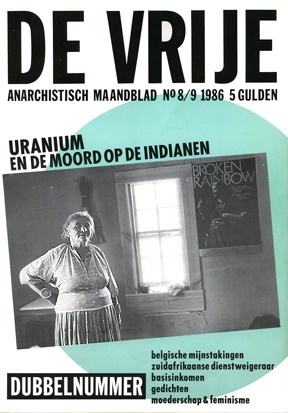 ‘DE VRIJE’ Anarchistisch maandblad
‘DE VRIJE’ Anarchistisch maandblad
Amsterdam, September 1986
STEENKOOL, URANIUM EN DE MOORD OP INDIANEN en français
‘De aarde en ikzelf zijn één van ziel.’ Deze indiaanse uitspraak drukt kernachtig uit wat de traditionele Navajo’s en Hopi’s al twaalf jaar tevergeefs aan de amerikaanse regering proberen duidelijk te maken. De op handen zijnde deportatie van tienduizend Navajo’s uit het gebied in Arizona waar hun voorouders eeuwenlang hebben geleefd – een deportatie die, sinds op 7 juli van dit jaar het ultimatum verstreek, elk moment kan beginnen – dreigt een nieuw dieptepunt te worden in de geschiedenis van de USA. Een geschiedenis waarin de regering systematisch heeft getracht een eind te maken aan het bestaan van de indianenkulturen. Waarin de ‘Oude Volkeren’het moeten afleggen tegen steenkool- en uraniumwinningsbedrijven, mormonisme, politici en ‘ekonomische ontwikkeling’. Dit artikel werpt licht op de achtergronden van het konflikt in Arizona en beschrijft de strijd van de traditionele Navajo’s en Hopi’s tegen het verkrachten van hun aarde en hun leven.
Op een dag in de herfst van 1977 arriveert in Black Mesa, in het hart van het Navajo-reservaat in Arizona, een bouwploeg van de overheid. Hun opdracht is om daar dwars door de rotsenwoestenij heen een hek van prikkeldraad aan te leggen. Vlak na hun aankomst staan zij ineens tegenover Pauline Whitesinger, een 43-jarige Navajo-weduwe en moeder. Pauline beveelt de mannen van haar land te verdwijnen. Als antwoord geeft de voorman van de ploeg een obsceniteit ten beste. Pauline’s vuist – het volgende moment ligt de voorman op de grond en is zij de ploeg met stokken en vuil aan het bekogelen. Terugdeinzend voor haar felle aanval kiezen de mannen het hazenpad.
Pauline Whitesinger’s daad luidde een fase in van daadwerkelijk verzet in de strijd van de Navajo indianen om het land te behouden waar ze al eeuwen leefden en waar ze met hart en ziel aan toebehoren. Het hek waarvan zij de aanleg sindsdien belemmerd hebben moest er komen van wege de Navajo-Hopi Landschikkingsbepaling, beter bekend als Public Law 93-531. Deze wet werd in 1974 door een opzettelijk misleid Congres aanvaard. De pretentie van PL 93-531 is het oplossen van een ‘konflikt’ tussen de Navajo’s en de Hopi’s over het bezit van de Joint Use Area, een gebied waar zij gezamenlijk over beschikken. De Navajo’s zouden het hebben gekonfiskeerd en de Hopi’s zouden de Navajo’s eruit willen gooien. In werkelijkheid is er geen sprake van een konflikt. Althans niet tussen het Navajo volk en het Hopi volk. Het echte konflikt is tussen de traditionele Navajo’s en Hopi’s aan de ene kant, en aan de andere kant hun – door de centrale overheid tegen hun zin ingestelde – bestuursraden, plus die overheid zelf, plus een aantal mijnbouw- en energiebedrijven, plus de mormoonse kerk. Het belang dat deze vier, onderling vaak nauw verweven, instanties met elkaar verbindt is gelegen in de vele miljarden aan hoogwaardige steenkool, uranium, aardolie en gas in de bodem van de Joint Use Area. De door mormonen gedomineerde bestuursraden en de mijnbouw- en energiebedrijven, die ook veelal mormoons bezit zijn, staan te trappelen om met elkaar bodemexploitatiekontrakten af te sluiten. De op die bodem levende indianen zijn echter niet van zins om hun land hieraan op te offeren. Bovendien bemoeilijkt het feit dat de Joint Use Area (hierna ook JUA) van oudsher gezamenlijk eigendom is van de Hopi’s en de Navajo’s het afsluiten van de kontrakten. De mijnbouw- en energiebedrijven moesten er het ‘konflikt’ voor kreëren en er een komplete terreinoorlog voor in scène zetten, maar uiteindelijk kregen ze het Congres ertoe hun ‘oplossing voor het konflikt tussen de Hopi’s en de Navajo’s te aanvaarden. PL 93-531 bepaalt dat de Joint Use Area door middel van een prikkeldraadhek in een Navajo helft en een Hopi helft gedeeld wordt. Alle Navajo’s die dan in Hopi gebied leven, dat zijn er ongeveer tienduizend, moeten daar weg. Voor de honderd Hopi’s op Navajo gebied geldt hetzelfde. De meesten worden buiten het reservaat geplaatst. Zo wordt de JUA in juridisch en in praktisch opzicht een stuk toegankelijker voor grondstoffenwinning.
DE AARDE LEEFT
Om te begrijpen wat zich precies op en rond de reservaten afspeelt is het van belang iets van de geschiedenis en van de kultuur van de Hopi’s en Navajo’s af te weten. De goudkoorts van 1848 brengt een stroom blanke mormonen en anderen naar (onder meer) Arizona en Nieuw-Mexico. Velen vestigen zich daar op het land dat duizend jaar lang aan de Hopi’s heeft toebehoord, en op het aangrenzend gebied weaar sinds zeshonderd jaar de Navajo’s wonen. Wrijvingen blijven niet uit. Hopi verzet bestaat traditioneel uit geweldloze nonkoöperatie. Maar de Navajo’s vechten terug tegen de blanke indringers, en zij leggen het loodje. Een kavaleriebrigade met aan het hoofd Amerika’s nationale held Kit Carsons verbrandt hun land, vernietigt hun dieren en boomgaarden en voert vijfentachtighonderd Navajo’s af naar een koncentratiekamp bij Fort Summer, waar velen de hongerdood sterven. Een paar jaar later komt de regering tot de konklusie dat het ekonomisch voordeliger is om de Navajo’s in staat te stellen zichzelf te onderhouden dan ze te bevechten. De overlevenden worden vrijgelaten en neergeplant in een klein, onvruchtbaar reservaat. Blanken hebben intussen hun oorspronkelijk land gekonfiskeerd, dus de Navajo’s die het reservaat ontvluchten vestigen zich in de onmiddelijke nabijheid van de Hopi’s. De druk van hun aanwezigheid leidt af en toe tot kleine ruzies, maar die worden steeds onderling opgelost. Over het algemeen is de relatie tussen de beide volken goed. Veel meer moeite hebben de Hopi’s met het feit dat de VS in 1882 ook voor hen een reservaat instellen. Iets waar ze volgens de Hopi’s geen enkel recht toe hebben: onder het verdrag van Guadalupe-Hidalgo zijn deze immers een onafhankelijke natie gebleven.
In 1934 wordt het Hopi-reservaat ingekrompen tot eenderde van haar eerdere oppervlakte. De Hopi’s weiden hun kudden nu in ‘Distrikt 6’; de Navajo’s daarbuiten, in het overige gedeelte van het oorspronkelijke reservaat. De eigendomsrechten van dit nieuwe stuk niemandsland berusten bij beide volken tezamen. Zo is de Joint Use Area ontstaan.
Aanvankelijk denkt de amerikaanse overheid dat de Hopi’s en de Navajo’s veilig zijn weggeborgen op een paar stukken waardeloos land. Maar al snel blijkt de bodem van hun reservaten rijk te zijn aan aardolie en gas, en in de loop van de twintigste eeuw wordt duidelijk dat de Navajo’s en de Hopi’s met hun krent bovenop een miljardenschat aan delfstoffen zitten: ook uitgestrekte steenkoolvelden en miljarden tonnen uranium liggen er onder de oppervlakte. Veel mijnbouw- en energiebedrijven tonen meteen grote interesse. Hun pogingen tot het afsluiten van bodemexploitatiekontrakten met de indianen lopen echter spaak. De laatsten denken namelijk anders over de aarde dan de blanke amerikanen. Hoewel elk volk haar eigen levenswijze en kultuur heeft – de Hopi’s leven van de landbouw op hoge rotsplateaux, terwijl de Navajo’s van oudsher met hun kudden door de woestijn trekken – is hun levenshouding in wezen dezelfde. Met het land dat hen en hun voorouders heeft voortgebracht voelen zij zich onafscheidelijk verbonden. En het land, de aarde leeft. Alles wat erop groeit of beweegt heeft een plaats in haar cyclus; alles houdt elkaar in balans. ‘We moeten onszelf zien als een deel van de aarde, niet als een vijand van buitenaf die probeert haar zijn wil op te leggen.’ Drukt een van de indianen het uit. ‘Wij weten dat, omdat we een levend deel van haar zijn, we geen stukje van haar kunnen schenden zonder onszelf pijn te doen.’ Daarom nemen de oude volken niet meer voor zichzelf dan noodzakelijk is. De Hopi’s bijvoorbeeld hebben zelden meer dieren gehouden dan zij voor hun direkte dagelijkse behoeften nodig hadden. Het land zelf is niemands eigendom. Maar het is de plicht van het erop levende volk om het te beschermen. Om deze levende moeder aarde open te breken en te verminken is lange tijd ondenkbaar geweest voor de Hopi’s en de Navajo’s, tot zij het voor hun ogen zagen gebeuren.
Amerikanen en westerlingen in het algemeen zien de aarde anders: als een gebruiksartikel, gewaardeerd op basis van haar ruilwaarde. Het is vanzelfsprekend om grond te verdelen, te kopen, te verkopen, open te breken om er van alles uit te halen, af te dekken met beton. Het land is dode materie. Het is dit verschil tussen de westerse opvatting over de aarde en de indiaanse benadering ervan dat uiteindelijk ten grondslag ligt aan het konflikt rond de JUA.
MORMOONSE HULP
Behalve onwillige kontraktpartners is er in het begin van deze eeuw nog een ander obstakel op de weg van de energie-exploitanten-in-spé. Met wie kunnen zij kontrakten sluiten? Volgens een wetje uit 1891 moet dat gebeuren met ‘de gezaghebbende Raad die de indianen vertegenwoordigt.’ Maar zo’n Raad bestaat niet.
De traditionele Hopi’s en Navajo’s kennen niet zoiets als een centraal gezag of vertegenwoordigend orgaan. De politieke macht is bij hen van oudsher gedecentraliseerd en berust op konsensus binnen autonome gemeenschappen. Bij de Navajo’s is de politieke eenheid de autonome familie. Deze telt twintig to tweehonderd leden die ekonomisch samenwerken en hun ceremonieën gezamenlijk voltrekken. Aan het hoofd staat soms een man, maar gewoonlijk een vrouw. De kudden en bezittingen staan onder het beheer van de vrouwen, en afstamming stellen de Navajo’s via de vrouwelijke lijn vast. Het is geen toeval dat het belangrijkste verzet tegen de gevolgen van PL 93-531 op dit moment van hun kant komt. Vaak zijn het vrouwen van zestig jaar of ouder die, gewapend met geweren, de bouwploegen het hoofd bieden.
Ook de Hopi’s is het verschijnsel centraal gezag vreemd. Elk Hopi dorp is een autonome eenheid met absoluut zelfbestuur. Er is wel altijd een traditioneel leider, de Kikmongwi, maar hij of zij heeft alleen gezag op grond van zijn of haar wijsheid. Als er problemen zijn komen de Kikmongwi’s uit de verschillende dorpen bij elkaar om informatie uit te wisselen en te beraadslagen. Daadwerkelijke beslissingen worden echter uitsluitend in de dorpen zelf genomen, en niet voordat alle betrokkenen het eens zijn geworden. Dit is vaak een moeizame weg en vereist veel praten, maar konsensus is een voorwaarde voor beslissingen die het dorp aangaan.
Een dergelijke inrichting van indiaanse samenlevingen was zowel de energiebedrijven als de overheid een doorn in het oog. Niet alleen waren de Hopi’s en de Navajo’s onaangepast aan de amerikaanse maatschappij; men kon er ook geen zaken mee doen. Waar waren de mensen met de macht om een handtekening onder een kontrakt te zetten? En die ook bereid waren om dat te doen zonder daarover eerst met alle anderen overeenstemming te hoeven bereiken? Die mensen moesten nog gemaakt worden. En daar waren toevallig de mormonen al sinds 1880 mee bezig: om van traditionele indianen winst- en machtsbeluste amerikaanse staatsburgers te maken. Het mormoonse geloof leert dat een donkere huid een straf van God is. De indianen zijn donker, aldus het Boek van Mormon, omdat zij zijn vervallen tot ongeloof en ijdelheid. Als zij zich to het mormonisme bekeren zullen ze weer blank worden. Gedreven door de edele wens de indianen te redden beginnen de mormonen rond 1880 de meest begaafde kinderen van (onder andere) de Hopi en Navajo reservaten te slepen, om hen ver weg in pleeggezinnen en kostscholen te plaatsen. Tot 1915 gebeurt dit vaak met behulp van de amerikaanse kavalerie, die de kinderen letterlijk wegsleurt en al te weerspannige ouders arresteert. Na 1914 maakt men vooral gebruik van de benarde financiële situatie van de ouders om hen te overreden. De kinderen wordt in hun – meestal mormoonse – pleeggezinnen verboden hun eigen taal te spreken en hun traditionele kleding of kapsel te dragen. Men geeft hun engelse namen en verklaart hun indiaanse gebruiken taboe. De kinderen worden onderworpen aan een uitgebreide religieuze indoktrinatie. Vandaag de dag is tussen de twintig en veertig procent van de Hopi’s mormoons – bij de Navajo’s ligt het percentage wat lager. Deze mensen geloven dat Gods Koninkrijk op aarde verwezenlijkt moet worden door het vergaren van zoveel mogelijk materiële rijkdom. De mormoonse kerk, die miljoenen leden telt, is dan ook puissant rijk en machtig. Mormonen bezitten vele bedrijven en multinationals. In de staat Utah (waar een deel van het Navajo reservaat in ligt) beheersen zij de hele politiek. Zij stichtten er de stad Salt Lake City. In de bedrijven die hun oog hebben laten vallen op de indiaanse bodemschatten zijn mormoonse belangen meer dan ruim vertegenwoordigd.
De mormoonse Hopi’s en Navajo’s bezien hun land met dezelfde ogen als deze bedrijven. Juist daardoor kon het huidige ‘konflikt’ als zodanig gepresenteerd worden.
“YELLOW CAKE”
Terug naar het begin van de eeuw. Terwijl de mormonen de indianen helpen blanke kapitalisten te worden zit ook het Bureau voor Indiaanse Zaken (BIA), een overheidsinstelling die met ondernemers meedenkt, niet stil. In 1921 vindt een dochteronderneming van Standard Oil olie in het Navajo reservaat. Direkt roept de BIA alle Navajo mannen (!) bijeen om een oliekontrakt goed te keuren. De vijfenzeventig aanwezigen stemmen unaniem tegen. De BIA trekt zich het lot van Standard Oil aan. Na twee jaar inspanning lukt het haar om, waarschijnlijk middels dreigementen en valse beloften, een permanente Navajo Bestuursraad te vormen, wier eerste daad is het overdragen van haar kontrakteringsmacht aan de BIA!
Dat was drieënzestig jaar geleden. Nu zijn er op het Navajo reservaat vier kolen-strip-mijnen (steenkool wordt er gedolven door de bovenste laag van de aarde op te blazen) en vijf reusachtige door steenkool aangedreven elektriciteitscentrales. Het gebied, dat ooit de schoonste lucht van de USA had, is nu bedekt met zwarte rook en roet. De Four Corners Power Plant stoot iedere dag driehonderdvijftig ton zwavel- en tweehonderd ton stikstofverbindingen uit in de atmosfeer. Er zijn achtendertig uraniummijnen en zes uraniumfabrieken. Deze liggen momenteel grotendeels stil omdat steenkool op dit moment gemakkelijker te delven en minder kontroversieel is. De uraniumwinning blijft echter wel interessant in verband met de produktie van kernwapens.
Van de vijfduizend Navajo mijnwerkers die tussen 1952 en 1969 in de uraniummijnen werkten zijn er intussen meer dan veertienhonderd overleden aan kanker, vooral longkanker. Een groot aantal overlevenden lijdt er eveneens aan. Het grondwater is radioaktief besmet. Talloze paarden en schapen zijn gestorven aan de gevolgen van het drinken ervan. Radioaktief uraniumafval is in grote hopen achtergelaten verspreid over het hele reservaat. Maria van Kints van de Stichting Nederlandse Aktiegroep Noordamerikaanse Indianen (NANAI) heeft ze zelf gezien. ‘Het lijken net grote zandheuvels. Yellow Cake noemen ze het. De kinderen spelen erin, er worden huizen van gebouwd, de schapen eten het gras dat erop groeit. Zo komt het in de voedselketen terecht. En alles blijft nog duizenden jaren besmet!’ Veel kinderen worden dan ook dood of misvormd geboren.
Bij dit alles komt dat de financiële overeenkomsten voor olie, uranium en steenkool die de BIA voor de Navajo’s heeft afgesloten tot de slechtste ter wereld behoren. Typerend is een kontrakt op grond waarvan de Navajo’s per ton steenkool vijftien dollarcent ontvangen, terwijl daarvoor op niet-indiaans land een bedrag van anderhalve dollar gebruikelijk is – tien keer zoveel. Zelf hebben de Navajo’s geen elektriciteit.
REFERENDUMBOYCOT
Ook bij de Hopi’s heeft men een officiële bestuursraad uit de grond gestampt. Om aan het zelfbestuur van de indianenvolken een einde te maken vaardigt de amerikaanse regering in 1934 de Indian Reorganization Act (IRA) uit. Deze wet wordt bejubeld als een grote verworvenheid: ze brengt de indianen de zegeningen van het amerikaanse politieke stelsel. De grondwet is alvast voor hen geschreven. Ze bevat onder meer de bepaling dat alle beslissingen van hun bestuursraden goedgekeurd moeten worden door de centrale regering. De Kikmongwi’s zijn vanaf het begin tegen de IRA (die 76 percent van alle indianenvolken door hun strot gedouwd werd). Zij boycotten het referendum erover: de Hopi manier om zich ergens tegen uit te spreken. De centrale overheid weet dat heel goed. Desondanks rekent ze onthouding als instemming. Met het gevolg dat de Hopi’s ineens geregeerd worden door een centrale bestuursraad die wetten kan uitvaardigen en namens het hele volk kontrakten kan afsluiten met bedrijven. Nog steeds heeft de Hopi raad een elektorale basis van minder dan tien procent. De bezetting, die lange tijd niet eens genoeg was voor een quorum, bestond en bestaat nagenoeg geheel uit mormoonse Hopi’s. Deze zogenaamde ‘progressieven’ vinden bestuursraden en bodemexploitatie en ‘the American way’ allemaal even mooi en zijn goede maatjes met de overheid.
In 1955 stelt de Hopi raad een advokaat uit Salt Lake City aan om hun onderhandelingen met de energiebedrijven te voeren. Deze John Boyden, die de samenstelling van de betreffende raad eerst via de BIA zelf heeft geregeld, is een mormoons oud-aartsbisschop. Hij heeft enkele jaren eerder namens de Hopi’s een ‘land claim’ ingediend bij de Indian Land Claims Commission, en ‘gewonnen’. Op grond van een recente wet betekende dat echter dat de Hopi’s niet, zoals zij geloofden, hun land terugkregen, maar alleen een relatief zeer lage som geld, waarvan Boyden als hun advokaat ook nog een flink percentage ontving. Tot op heden heeft zelfs hun bestuursraad geweigerd dat geld aan te nemen.
Boyden sluit in de jaren zestig namens de Hopi’s een reeks kontrakten af met mijnbouw- en energiebedrijven. De Kikmongwi’s, als vertegenwoordigers van de traditionele Hopi’s, protesteren bij iedere stap en brengen de zaak zelfs voor de federale rechter. Deze wijst hun eis dat de bestuursraad niet als legitieme vertegenwoordiging van hun volk mag gelden af op grond van het argument dat zij het recht niet hebben om hun eigen overheid aan te klagen!
NATIONAAL OPOFFERINGSGEBIED
Ondertussen gaat Boyden verder. Onderzoek heeft naderhand aangetoond dat hij, behalve voor de Hopi raad, tegelijk werkte voor een grote mormoonse kolenmijnmaatschappij, Peabody Coal Company. Het is met Peabody dat hij in 1964 en 1966 de belangrijkste kontrakten afsluit (zijn eigen loon is een miljoen dollar). Peabody pacht honderd vierkante mijl land op Black Mesa, dat deels in de Joint Use Area ligt en waar zich het rijkste steenkoolveld van Arizona bevindt. De mijnen laten enorme littekens na op het land. Erger nog is dat voor het vervoer van de steenkool, dat via een honderden kilometers lange pijpleiding gebeurt, tot op heden iedere dag zeveneneenhalf miljoen liter grondwater aan de bodem onttrokken wordt. Dit vormt een ernstige bedreiging voor de landbouw en veehouderij waar de indianen in deze toch al droge streek van afhankelijk zijn. ‘Het onttrekken van grote hoeveelheden water van onder Black Mesa zal de harmonie verbreken en alles uit balans brengen.’ Waarschuwen de Kikmongwi’s in 1971. Hun protest geldt de hele westerse wijze van omgaan met de aarde en de gevolgen daarvan. ‘De technische ontwikkeling van de blanke man is ontstaan als gevolg van zijn gebrek aan aandacht voor het spirituele en voor de manier waarop alles leeft.’ Aldus woordvoerder Thomas Banyacaya. ‘Als de heilige grond wordt geschonden en opengescheurd door grondstoffenexploitatie en andere destruktieve praktijken, betekent dat op de lange termijn ook de grootste dodenmars voor alle volken ter wereld.’
Het steenkoolveld onder Black Mesa – door de National Academy of Sciences intussen tot ‘nationaal opofferingsgebied’verklaard – strekt zich uit tot Big Mountain, vier kilometer verderop in de Joint Use Area. Hier bevindt zich naar schatting eenentwintig miljard gemakkelijk toegankelijke steenkool onder de oppervlakte. Behalve Peabody lukt het echter geen enkel mijnexploitatiebedrijf vat te krijgen op de steenkoolschat. Noch de Hopi raad noch de Navajo raad (die in tegenstelling tot de traditionele ook niet ongenegen is mijnbouwvergunningen te verlenen) heeft zelfstandig de macht het te verpachten. En met elkaar kunnen zij het niet eens worden wie wat krijgt. Ondertussen zijn de mensen die op Big Mountain wonen vastbesloten dat alle 21 miljard ton steenkool die daar in de bodem zit er ook zal blijven.
“GOEDE INDIANEN”
In de tweede heelft van de jaren zestig beginnen de ‘progressieve’ Hopi’s (dat wil zeggen de Hopi bestuursraad) een intensieve kampagne om de Joint Use Area te splitsen en zich te ontdoen van de Navajo’s. Met de exploitatie van de bodem zijn hun persoonlijke belangen gemoeid doordat de salarissen van de indiaanse ambtsdragers mede bepaald worden door de inkomsten uit mijnbouwvergunningen. Maar ook schakelen de progressieven meer en meer over op grootschalige veehouderij: zij hebben dus meer grond nodig dan voorheen. Jerry Kammer, een journalist die op onderzoek uittrok, konkludeert in 1980: ‘De familie die van deze gang van zaken het meest profiteert is de familie Sekaquaptewa. De Sekaquaptewa’s zijn de rijkste Hopi’s en bezitten de grootste veehouderij. Mormonen. Wayne Sekaquaptewa is tevens eigenaar van het Hopi dagblad en oud-president van de mormoonse kerk op het reservaat. Zijn broer Abbot is de huidige voorzitter van de Hopi bestuursraad.’
Degeen die de kampagne trekt is echter John Boyden. Met behulp van de Peabody Coal Company, plus een groep bankiers uit Utah, plus WEST, een genootschap van geïnteresseerde energiebedrijven, is hij in Washingtion D.C. onafgebroken bezig met pogingen het Congres voor zijn zaak te winnen. Het Congres krijgt te horen dat de Navajo’s land van de Hopi’s zijn binnengedrongen en weigeren weg te gaan. Er zou een komplete terreinoorlog aan de gang zijn. Ondertussen zet een door de Hopi raad in de arm genomen Public Relations firma, Evans & Associates uit Salt Lake City, die terreinoorlog in scène. Ze verspreidt foto’s van afgebrande kampen en kapotgeschoten voorraadschuren, welke door de meeste bladen gretig worden overgenomen. De Washington Post schrijft op 21 juli 1974 in een verslag hierover: ‘Evans & Associates vertegenwoordigde tevens een vereniging van 23 nutsbedrijven die bezig waren elektriciteitscentrales en kolenstripmijnen aan te leggen in het Four Cornersgebied (waar het reservaat ligt, J.) … Deze bedrijven vertelden hun klanten dat de Hopi’s ‘goede indianen’ waren, die het spul waarop hun airconditioners liepen niet stop zouden zetten.’ De kampagne heeft succes. In 1974 aanvaardt een door Watergate afgeleid Congres Public Law 93-531, waarvoor met name senator Barry Goldwater uit Arizona heeft geijverd. De Joint Use Area, zo bepaalt deze wet, moet door een zeshonderd kilometer lang prikkeldraadhek in een Navajo- en een Hopi-gedeelte gesplitst worden; de tienduizend Navajo’s die aan de verkeerde kant van het hek wonen moeten, als voorbereiding op hun deportatie, negentig procent van hun vee doden of verkopen; en er komt een verbod op het bouwen, verbeteren en repareren van woningen en schuren. Een overplaatsingskommissie zal de deportatie van de Navajo’s regelen. Zij krijgen een oprotpremie van vijfduizend dollar als ze binne vijf jaar vrijwillig vertrekken. Daarnaast belooft de wet ‘de averechtse impact te minimaliseren’ door de Navajo’s elders land te geven. De regering zal daar zorgen voor ‘fatsoenlijke hygiënische woningen’plus de infrastruktuur voor een gemeenschap: scholen, ziekenhuizen, wegen etc.. Want in het reservaat zelf is geen plaats meer. Het land is er al overbegraasd, het is moeilijk zich er in leven te houden.
Een krappe twintig procent van de bewoners van de JUA heeft zich inmiddels, vaak onder druk, laten overplaatsen. Daarmee begon de omvang van de tragedie die PL 93-531 inhoudt duidelijk te worden.
DEPRESSIES EN ZELFMOORD
De overgeplaatste Navajo’s komen terecht in eensgezinswoningen in kleinburgerlijke en racistische randgemeenten. De huisjes hebben stopkontakten en gas- en waterleidingen maar elektriciteit, gas en licht wil er nog wel eens aan ontbreken. Om van het Beloofde Land nog maar te zwijgen.
Veertig procent van de overgeplaatste Navajo’s verstaat geen engels en de meerderheid heeft nog nooit in loondienst gewerkt of belasting betaald. Maar in hun tuin kunnen zij moeilijk hun onafhankelijk bestaan als schapenhouder voortzetten. Zij moeten zien te overleven in een volkomen vreemd ekonomisch en burokratisch systeem, terwijl de kans op werk vanwege hun achtergrond miniem is. De meesten raken dan ook snel in moeilijkheden als ze belasting moeten gaan betalen of plotseling gas- en lichtrekeningen en medische kosten krijgen. Kredietmaatschappijen springen handig in op hun onervarenheid in ekonomisch opzicht. Zij halen hen er bijvoorbeeld toe over hun huis in onderpand te geven voor leningen waarvan de kredietmaatschappij weet dat ze die nooit zullen kunnen aflossen. Andere huizen worden verkocht voor een kwart van wat ze waard zijn. Inmiddels is vijftig procent van de naar Flagstaff overgeplaatste Navajo’s hun huis zo kwijtgeraakt. Merkwaardig genoeg koopt de Overplaatsingskommissie die huizen rustig twee of drie keer achter elkaar weer terug van de onroerendgoedfirma’s, kennelijk zonder zich af te vragen wat er met de vorige eigenaars gebeurt is.
Van de beloften van de overheid over scholen en gezondheidsvoorzieningen zijn de meeste loos gebleken. Maar zwaarder dan hun materiële nood valt de Dineh (zo noemen de Navajo’s zichzelf vaak) de scheiding van hun land. Met het land waarmee hun religie en hun bestaan verbonden zijn valt de grond onder hun voeten ook figuurlijk weg. Zij zien hun kultuur aan stukken geslagen, hun gemeenschapsleven versplinterd: ‘Dit lijkt ons einde te worden.’ Aldus een overgeplaatste vrouw. ‘Onze toekomstplannen voor de kinderen liggen in duigen. We voelen ons erg eenzaam na de overplaatsing. Het lijkt hier net een gevangenis. We vragen ons af waarom we het gedaan hebben. Als we ons niet hadden laten overplaatsen was onze dochter misschien niet gestorven.’ Feit is dat velen, behalve met depressies en alkoholisme, kampen met gezondheidsproblemen. Er is een hoog sterftecijfer. Onder invloed van de emotionele stress vallen ook gezinnen uiteen en is het aantal zelfmoorden sterk gestegen.
Van de overgeplaatste Navajo’s is een deel illegaal weer teruggekeerd naar hun vroegere land. Maar daar wordt het steeds moeilijker te overleven. Vanwege het verbod op bouwen en repareren wonen steeds grotere families in langzaamaan verder vervallende hogans, de traditionele houten hutten. Als zij proberen iets aan hun woonsituatie te doen zien zij het resultaat van hun inspanningen voor hun ogen door overheidspersoneel afgebroken worden. Met tien procent van hun vroegere vee kunnen zij zich maar nauwelijks in leven houden: hun voeding bestaat uit brood, koffie en aardappels. Maar zij zijn vastbesloten zich niet te laten verjagen. Namens Reagan is aangekondigd dat het leger erbij ingeschakeld zal worden. De oude Navajo-vrouwen zijn erop voorbereid. ‘We hebben eerder tegenover soldaten gestaan. En tot nu toe hebben we het overleefd.’ Het karwei zal voor de militairen geen zachtgekookt eitje zijn. Een aantal vrouwen is al gearresteerd omdat ze hekwerkers over hun hoofd heen schoten, maar niemand is tot nu toe veroordeeld. En het hek wil maar niet overeind blijven.
VOLKERENMOORD
Het verzet groeit onder de traditionele Navajo’s. Steeds duidelijker vallen zij ook de voorzitter van hun huidige bestuursraad, Peter Zah, aan. Zah werpt zich op als verdediger van de traditionelen maar in feite verzet hij zich niet tegen de overheid. Hij onderhandelt over hoe de deportaties zich moeten voltrekken, hij keert zich er niet tegen. Samen met General Electric en Bechtel heeft hij zelfs plannen gemaakt voor de installatie van een elektriciteitscentrale met een vermogen van tweeduizend megawatt en een kolenstripmijn op Navajogrond. Van hem hebben de ‘oude’ Navajo’s niets te verwachten. Het zijn in de eerste plaats de traditionele Hopi’s die hen steunen in hun verzet tegen de regeringsplannen. De gewone Hopi’s zijn evenmin als de Dineh gebaat bij de plannen van hun bestuursraad, die er geen twijfel over laat bestaan dat ze de nieuwverworven grond zal gebruiken voor kolenstripmijnen, waar vooral zijzelf beter van wordt. Ondanks alle pogingen van buitenaf om hen tegen elkaar uit te spelen blijven de meeste Hopi’s één lijn trekken met de traditionele Navajo’s. Thomas Banyacaya publiceert in 1981 namens hen een solidariteitsverklaring met de Dineh.
In 1982 ontstaat in Flagstaff het Big Mountain-JUA Legal Defense/Offense Committee (BMLDOC). Onder leiding van de ouderen van Big Mountain verleent het BMLDOC gratis juridische bijstand aan de indianen die door het overplaatsingsprogramma worden getroffen. Zij spant een aantal rechtszaken aan tegen de staat en voert een kampagne om PL 93-531 te herroepen.
Steun komt ook van onverwachte zijde. Op 1 januari 1982 trekt de direkteur van de Overplaatsingskommissie, Leon Berger, zich uit zijn funktie terug. Hij noemt het overplaatsingsprogramma ‘een ramp zonder weerga’ en kondigt aan dat hij zich gaat inzetten voor het herroepen van de wet. In mei van dat jaar neemt kommissielid Roger Lewis op dezelfde gronden ontslag.
Ook internationaal begint er verzet te ontstaan tegen de gevolgen van PL 93-531. De jury van het Vierde Russell Tribunaal, dat in 1980 te Rotterdam gehouden wordt, konkludeert dat volgens de Konventie van de Verenigde Naties sprake is van volkerenmoord.
In Nederland houdt onder andere stichting NANAI zich bezig met de op handen zijnde gedwongen deportatie, en overal in Europ verrijzen aktie- en steungroepen.
AMENDEMENTEN
Zelfs in het amerikaanse Congres zijn de laatste tijd bezorgde geluiden te horen. Deze gelden in de eerste plaats de financiële zijde van het programma. De veertig miljoen dollar die PL 93-531 zou gaan kosten zijn inmiddels opgelopen to vijfhonderd miljoen, en de totale uitgaven zouden wel eens twee miljard dollar kunnen gaan bedragen. In een tijd waarin overal in de VS drastische bezuinigingen doorgevoerd worden kan het Congres zich tegenover de belastingbetalers niet permitteren om zo’n bedrag te spenderen aan ‘interventie in een konflikt tussen een paar indianenstammen’(het beeld dat, dankzij de media, nog steeds bestaat). En dit kan helemaal niet als het programma, in de woorden van Congreslid Les AuCoin, ‘een groot fiasko genoemd kan worden’. Tot een aantal Congresleden begint het door te dringen dat het het resultaat van hun inerventie is dat een trots, ekonomisch onafhankelijk volk verandert in een groep ellendige en ontheemde mensen die voor hun overleven afhankelijk zijn van overheidshulp. Er zijn dan ook een aantal amendementen ingediend met het doel de gedwongen deportatie, die sinds 7 juli van dit jaar elke dag kan plaatsvinden, uit te stellen. Bijvoorbeeld tot er voldoende woningen zijn gebouwd voor de te deporteren Navajo’s – vanwege de bezuinigingspolitiek is de bouw daarvan sterk vertraagd. Wat betreft de bepalingen over medische en onderwijsvoorzieningen, daar rept men niet meer over.
Natuurlijk maakt uitstel geen verschil. De deportatie mag helemaal niet gebeuren. Hij is, zoals Navajo verztsvrouw Roberta Blackgoat het uitdrukt ‘een andere weg: een weg naar honger en volkerenmoord’. De Dineh hebben net als de traditionele Hopi’s recht op hun land, hun leven, hun kultuur. En de wereld heeft hen nodig, omdat Big Mountain overal is. De ekonomische, sociale en politieke krachten waar deze mensen tegen vechten zijn ook in de rest van de wereld aan het werk. In een tijd dat de aarde daaraan kapot aan het gaan is weten de Dineh, als een van de laatste volkeren, te leven zonder de balans van de natuur te verstoren en hebben zij hun eenheid van geest met de aarde weten te bewaren. Laat dat zo blijven. Alle steun is nodig in de strijd tegen de deportatie.
[…]
Jansen
NOUVELLES PHOTOS DES MANIFS A FLAGSTAFF:
http://bsnorrell.blogspot.com/2011/08/photos-protect-san-francisco-peaks.html
http://bsnorrell.blogspot.com/2011/08/photos-peaks-supporters-blockade.html?spref=fb
————————————————————————————————-
Les défenseurs des San Francisco Peaks continuent les actions après les arrestations
Original article in English: http://bsnorrell.blogspot.com/2011/08/san-francisco-peaks-defenders-continue.html
Par Protect the Peaks
Publié sur Censored News, photos Censored News (voir plus de photos sur le site de Censored News)
Traduction Christine Prat
FLAGSTAFF, Arizona – (7 août 2011) Plus de cent personnes, dont des familles avec des enfants et des personnes âgées, ont défilé dans le centre de Flagstaff dimanche pour protester contre la destruction et la profanation des San Francisco Peaks par la firme Arizona Snowbowl. Les manifestants se sont d’abord rassemblés à Wheeler Park où ils ont immédiatement reçu l’ordre de la police de Flagstaff de quitter ce parc publique. Lorsque le cortège a défilé dans le centre de Flagstaff, les manifestants ont eu beaucoup de réactions positives et de soutien, tandis que des dizaines de policiers – beaucoup d’entre eux en civil – harcelaient les manifestants. Des voitures de police roulaient le long du cortège. Quand les manifestants ont distribué des tracts et porté des banderoles dans le sud de Flagstaff, la police a violemment interrompu le défilé, se saisissant des personnes les plus proches d’eux et les arrêtant. Pendant que six manifestants étaient menottés, les autres continuaient à hurler leurs exigences de mettre un terme à la destruction des Pics.
« Tant que la firme Arizona Snowbowl, le Service des Forêts du gouvernement Obama et la Ville de Flagstaff continueront à perpétrer cet écocide et ce génocide culturel, nous n’arrêterons pas, » a déclaré Klee Benally (Diné), un des manifestants arrêtés. « Nous prierons, manifesterons, protesterons et engagerons toute action nécessaire pour que nos droits humains de base, notre dignité et notre environnement soient sauvegardés. La violence injustifiée employée aujourd’hui par la police de Flagstaff prouve qu’ils ne sont pas du côté de la justice et de la santé des communautés. Le Service des Forêts et la Ville de Flagstaff sont du côté des intérêts des grandes compagnies qui détruisent nos communautés. »
Depuis le 25 mai 2011, les propriétaires d’Arizona Snowbowl, soutenues par le Service des Forêts US et le Conseil Municipal de Flagstaff, ont installé plus de 5 miles (8 km) sur 14,8 de tuyaux pour transporter des eaux usées et ont abattu plus de 40 acres de forêt alpine rare. Une procédure judiciaire contre le Service des Forêts, concernant l’impact de neige faite d’eaux usées sur la santé humaine, est toujours en appel devant la Cour du 9ème Circuit. Les individus qui ont manifesté aujourd’hui ne font pas partie de la Coalition qui a engagé cette procédure.
La manifestation de dimanche rejoint une résistance de quatre décennies à la profanation des Pics Sacrés. Au cours des trois dernières semaines, depuis que Snowbowl a commencé l’abattage des arbres, des dizaines de camps de protestation ont été établis sur la montagne.
« La Semaine d’Action est le point culminant d’efforts pour dénoncer directement le manque de volonté politique de la part du Service des Forêts et du Conseil Municipal pour préserver la communauté, la santé publique et les droits culturels, » dit Nadia Del Callejo qui a été arrêtée alors qu’elle ne faisait que filmer l’incident.
«C’est la même soif de profit malsaine qui pousse à la profanation des Pics qui a conduit à la militarisation de la frontière (entre l’Arizona et le Mexique – NdT) et les amène maintenant à profaner la Montagne du Sud (près de Phoenix – NdT), sacrée pour tous les O’odham. » dit Alex Soto (Tohono O’odham) qui a aussi été arrêté, « Les sites sacrés subissent une attaque, mais aujourd’hui nous disons non. Notre solidarité dans ces luttes est en train de rétablir nos réseaux de soutien traditionels ». Les manifestants invitent tout le monde à les rejoindre lundi 8 août à 12h30 (heure d’Arizona, 21h30 en France – NdT) devant le siège du Service de la Forêt Nationale de Coconino, 1824 S. Thomson street [mise à jour: voir article ci-dessous], mercredi à 12h30 (heure d’Arizona, +9 en Europe – NdT) devant le siège de High Desert Investment, 504 E. Butler Avenue et, toujours mercredi, à 16h (idem – NdT) devant l’Hôtel de Ville de Flagstaff.
Les protestataires ont juré de ne pas abandonner jusqu’à ce que la profanation des Pics cesse. « Je n’ai pas peur de ce qui m’arrivera si je proteste, ce dont j’ai le plus peur, c’est de ce qui arrivera si je ne me lève pas pour défendre ce que sont les Pics » dit Del Callejo.
——————————————————————————
Impossible de les arrêter maintenant: les défenseurs des San Francisco Peaks protestent devant le siège du Service des Forêts
Vous ne pouvez pas les arrêter maintenant !
Par Brenda Norrell
Censored News
http://bsnorrell.blogspot.com/2011/08/cant-stop-em-now-san-francisco-peaks.html
Photos : Youth of the peaks
Lundi 8 août 2011
FLAGSTAFF, Arizona – Les défenseurs des Pics San Francisco se rassemblent devant le siège du Service des Forêts ce lundi après-mide, pour protester contre l’implication du Service des Forêts des Etats-Unis dans la profanation des Pics Sacrés par la station de ski privée Snowbowl. La station a l’intention d’utiliser de l’eau d’égouts recyclée pour faire de la neige pour les touristes. Les Pics sont sacrés pour 13 Nations Amérindiennes de la région. Les « hommes-médecine » y récoltent les plantes médicinales et y procèdent à des cérémonies.
Six personnes ont été arrêtées pendant une manifestation dimanche, parmi eux Klee Benally, Navajo, et Alex Sote, O’odham. Lundi à l’aube, huit autres personnes se sont enchaînées à des blocs de béton et ont bloqué des ouvriers du chantier sur les Pics. Ils ont été arrêtés et attendent la caution. Déjà, la construction du pipeline a résulté dans l’abattage d’arbres anciens. Les Amérindiens appellent à boycotter la station Snowbowl.
Beaucoup de commerces et d’hotels à Flagstaff utilisent des images Amérindiennes, leurs bijoux et leur culture à des fins lucratives. Les Amérindiens demandent que leur culture et leurs traditions soient respectés.
Voir Censored News pour des articles et des photos :
http://www.bsnorrell.blogspot.com
Supporters du monde entier
S’il vous plait, traduisez les articles et utilisez les photos de Censored News, en mentionnant le nom de l’auteur et du photographe, publiez-les et appelez à un boycott de la Station de Ski Snowbowl !
. Que les skieurs sachent que la Station de Ski Snowbowl ne se contente pas d’exploiter la culture Autochtone et de détruire les Pics Sacrés San Francisco, mais aussi que Snowbowl rend nécessaire l’arrestation des jeunes Autochtones qui défendent leurs montagnes sacrées et leur mode de vie.
——————————————————————————
Taala Hooghan Infoshop lundi 8 août, 16h45 (heure française)
UPDATE: One more person arrested – apparently cops agressively cutting people out of lock devices with no regard for safety! People are needed now to witness! PROTECT THE PEAKS!
MISE A JOUR: Une personne de plus arrêtée – apparemment les flics détachent les gens enchaînés agressivement et sans se soucier de leur sécurité! On a besoin de témoins! PROTEGEZ LES PEAKS!
Taala Hooghan Infoshop lundi 8 août, 17h05 (heure française)
UPDATE: Another person extracted by police – PROTECT THE PEAKS! Support needed – get down to Snowbowl Rd!
MISE A JOUR: Une autre personne arrachée par la police – PROTEGEZ LES PEAKS! Besoin d’aide – venez sur la route de Snowbowl!
Brenda Norrell
Alex Soto on San Francisco Peaks said all eight protesters have been cut away from the barrels and are arrested, defending sacred San Francisco Peaks from the Snowbowl ski resort.
Alex Soto qui se trouve sur les San Francisco Peaks, les huit activistes enchaînés ont été détachés de force et arrêtés, alors qu’ils défendaient les Pics Sacrés contre la station de ski Snowbowl.
Brenda Norrell
Eight arrested Monday morning, $4760 needs to be raised for those who locked down & blockaded the Snowbowl road, preventing construction workers from installing pipeline to carry treated sewage for snowmaking up to holy Dook’o’oosliid. Please call Beth Lavely 928.254.1064 if you can donate.
Huit personnes arrêtées lundi matin, il faut trouver 4760 dollars pour ceux qui s’étaient enchaînés, bloquant la route de Snowbowl et empêchant les ouvriers d’installer le pipeline qui doit transporter l’eau des égouts pour faire de la neige sur la montagne Sacrée Dook’o’oosliid. Appeler Beth Lavely, (001)928.254.1064 si vous pouvez faire un don.
Brenda Norrell
Report from the scene of US Forest Service protest: Klee Benally tried to enter the building and US Forest officials halted and prevented him from entering.
Compte-rendu du rassemblement de protestation devant le Service des Forêts US: Klee Benally a essayé d’entrer dans le bâtiment et les officiels du Service des Forêts l’en ont empêché.
Lundi 8 août, 23h35 (heure française)
More updates on:
Southwest Earth First!
Dimanche après-midi, 7 août 2011, devant le café Macy’s à Flagstaff
Photos Youth Of The Peaks
Récents messages de Klee sur Twitter:
 Klee Benally
Klee Benally
Protesters locked down at snowbowl road. Stopping construction now! Support needed.
Des manifestants enchaînés sur la route de Snowbowl. Arrêtez la construction maintenant. Besoin de soutien
Lundi 8 août
 Klee Benally
Klee Benally
Just released from jail. Protect the peaks. The struggle continues.
Tout juste relâché. Protégez les Pics. La lutte continue.
Dimanche soir, 7 août
 Klee Benally
Klee Benally
Arrested for protesting snowbowl. In back of cop car now.
Arrêté pour avoir protesté contre Snowbowl. Actuellement à l’arrière d’une voiture de flics.
Dimanche après-midi, 7 août



